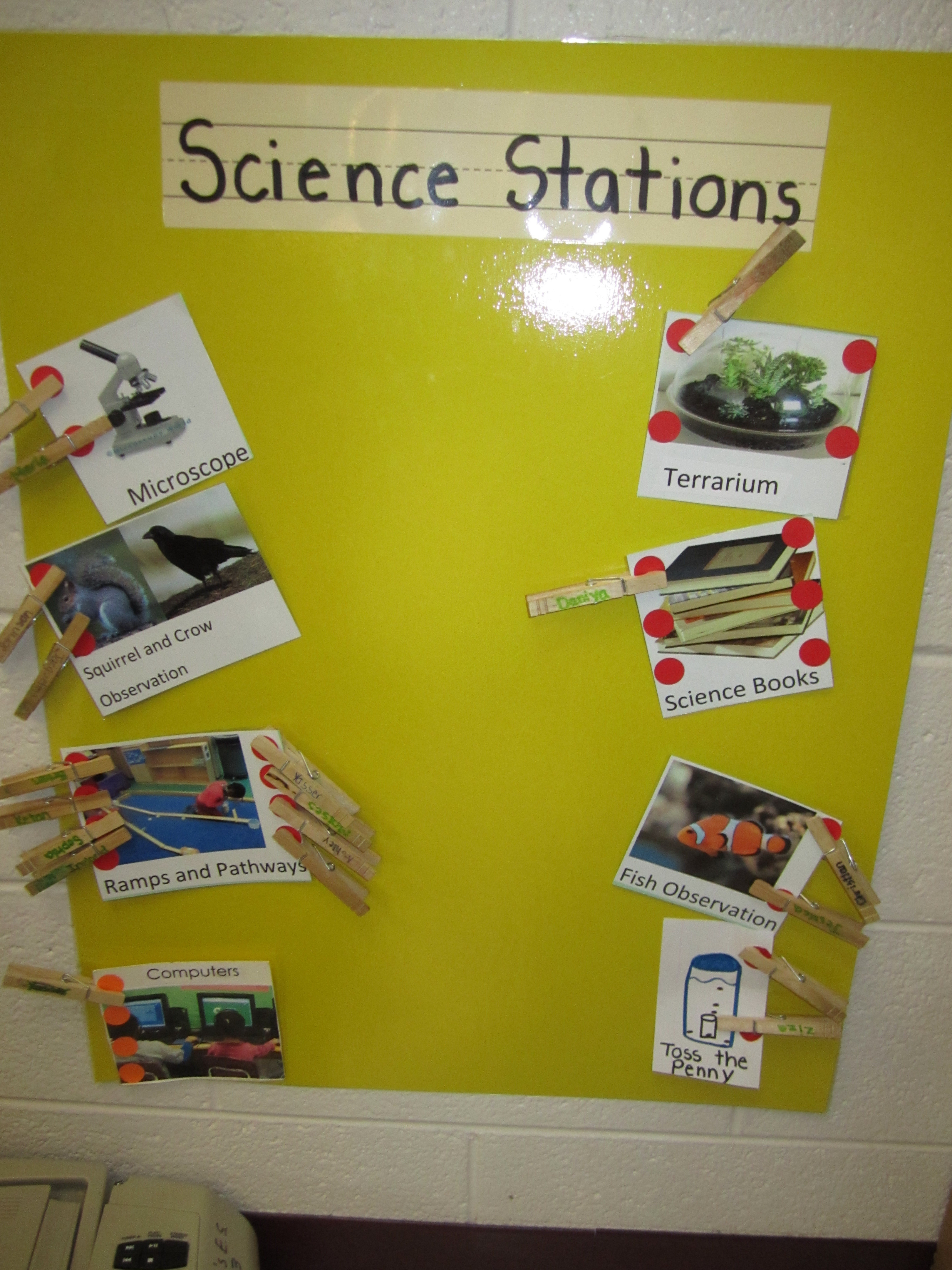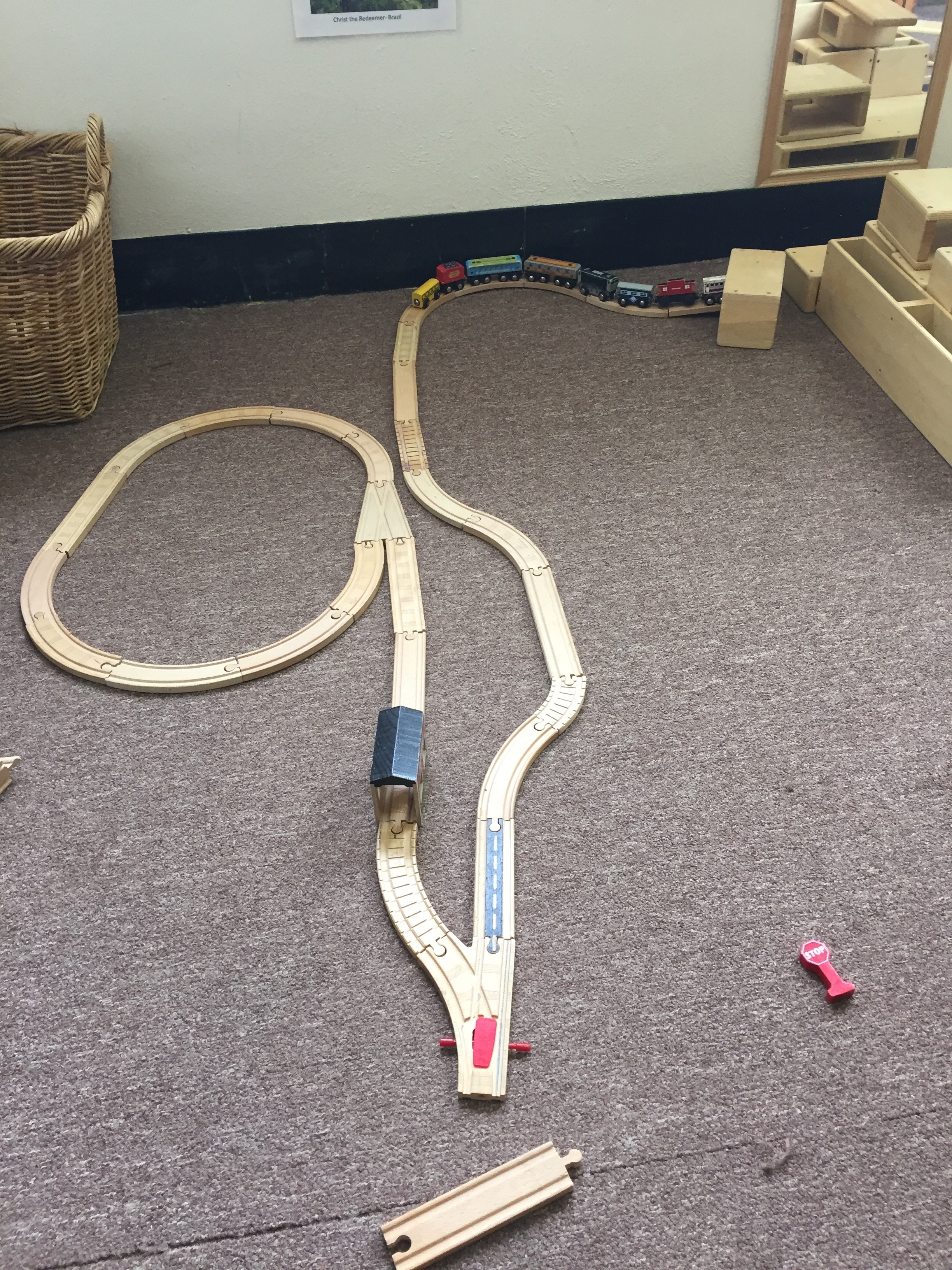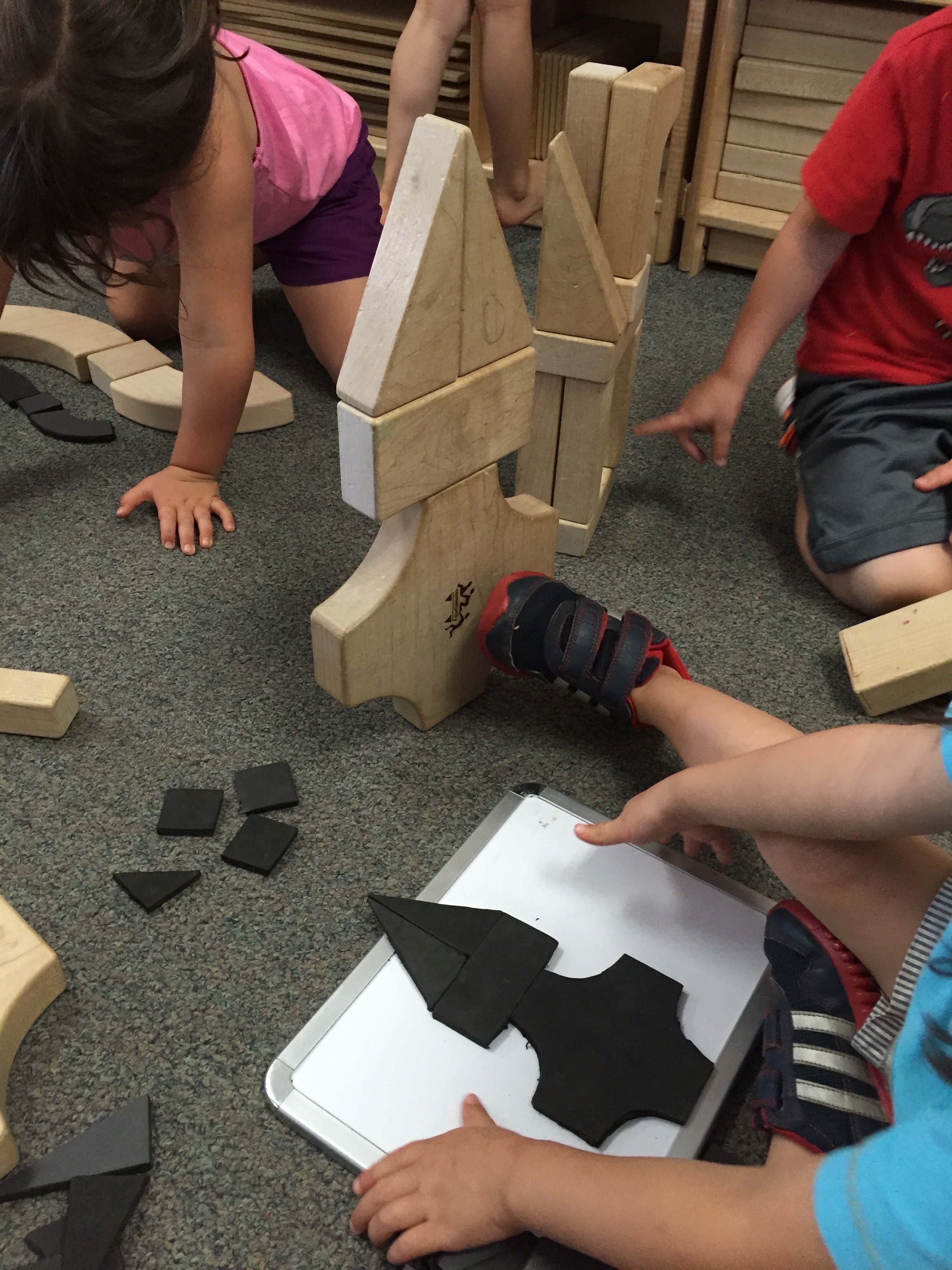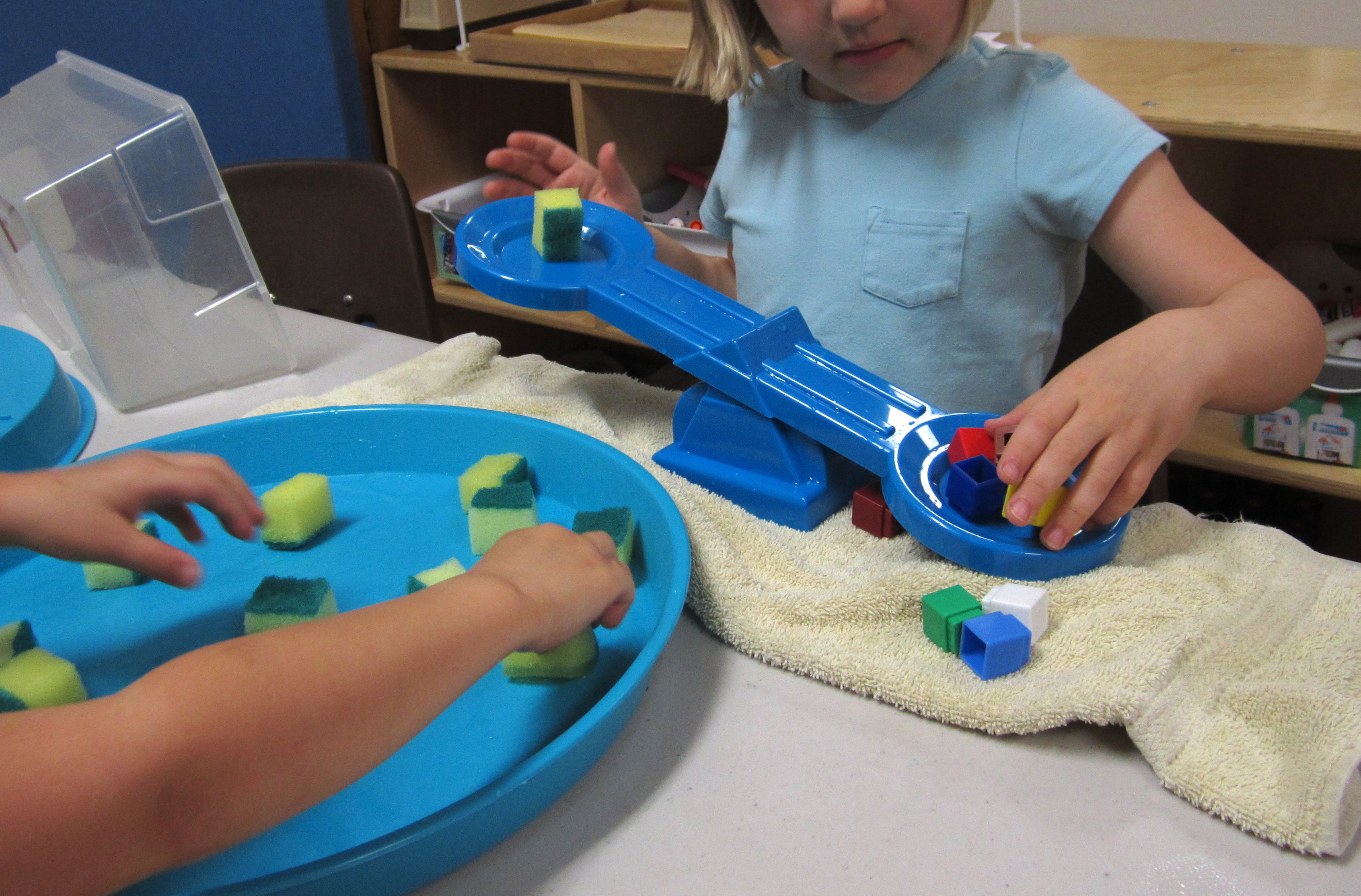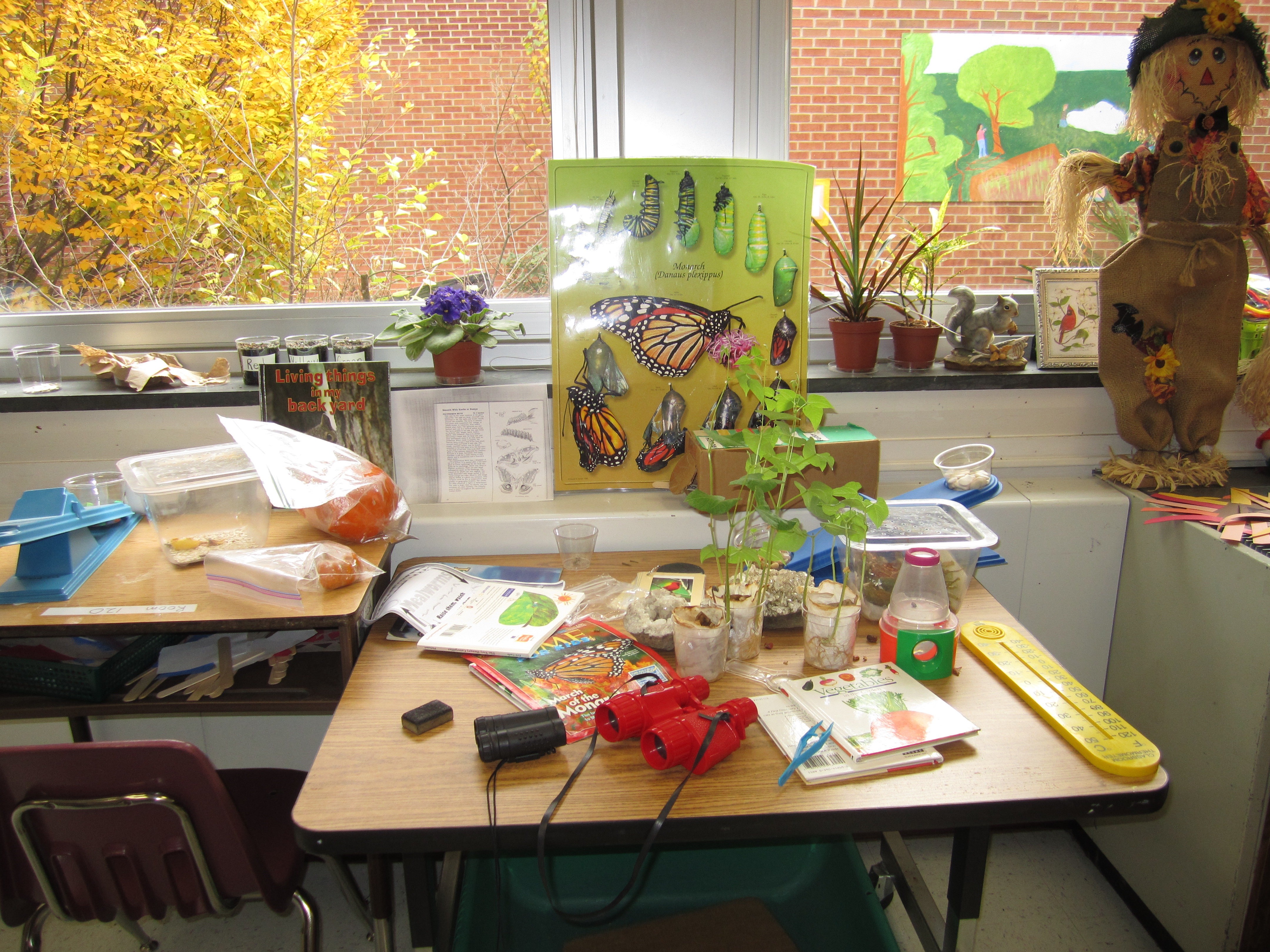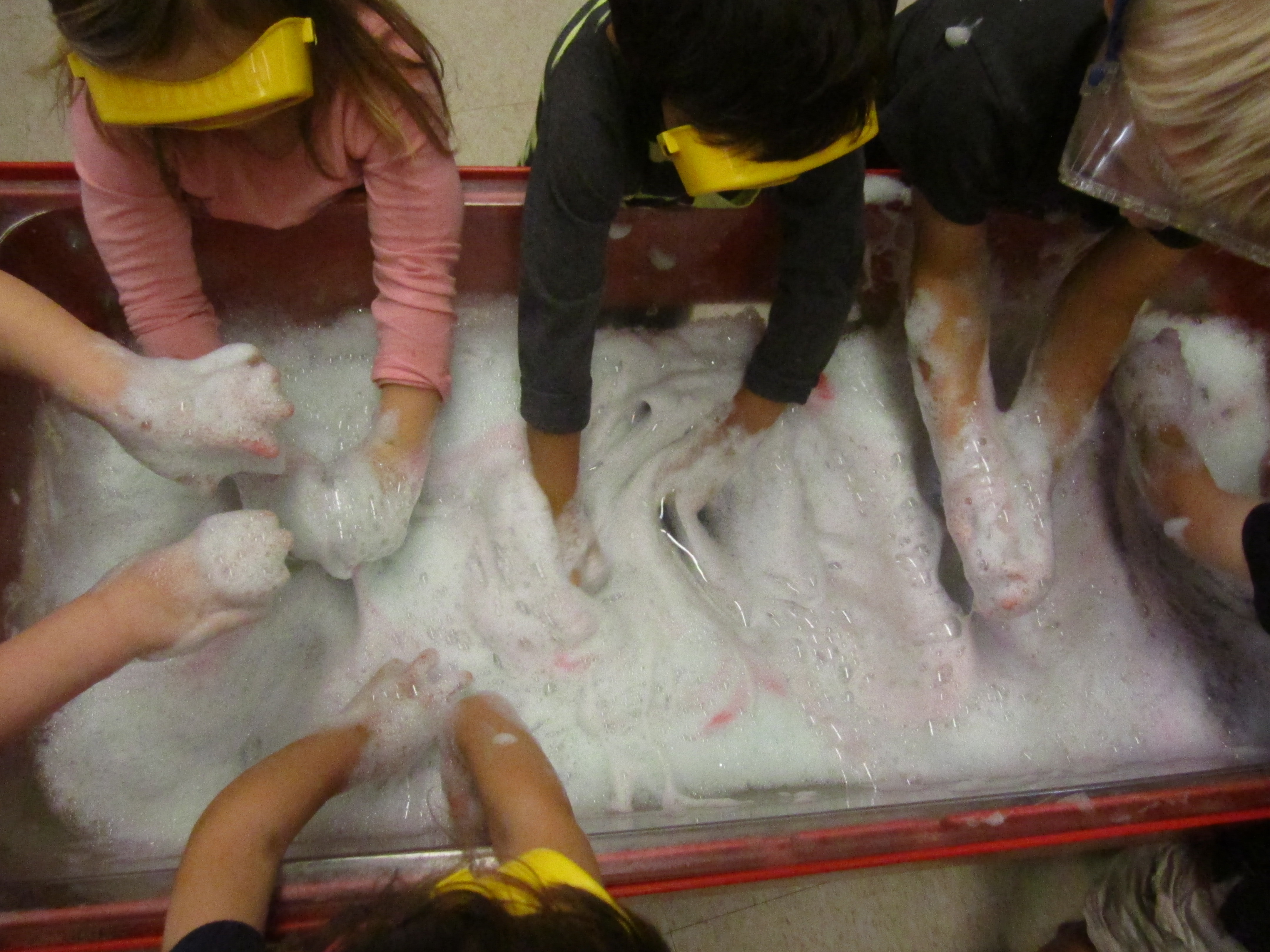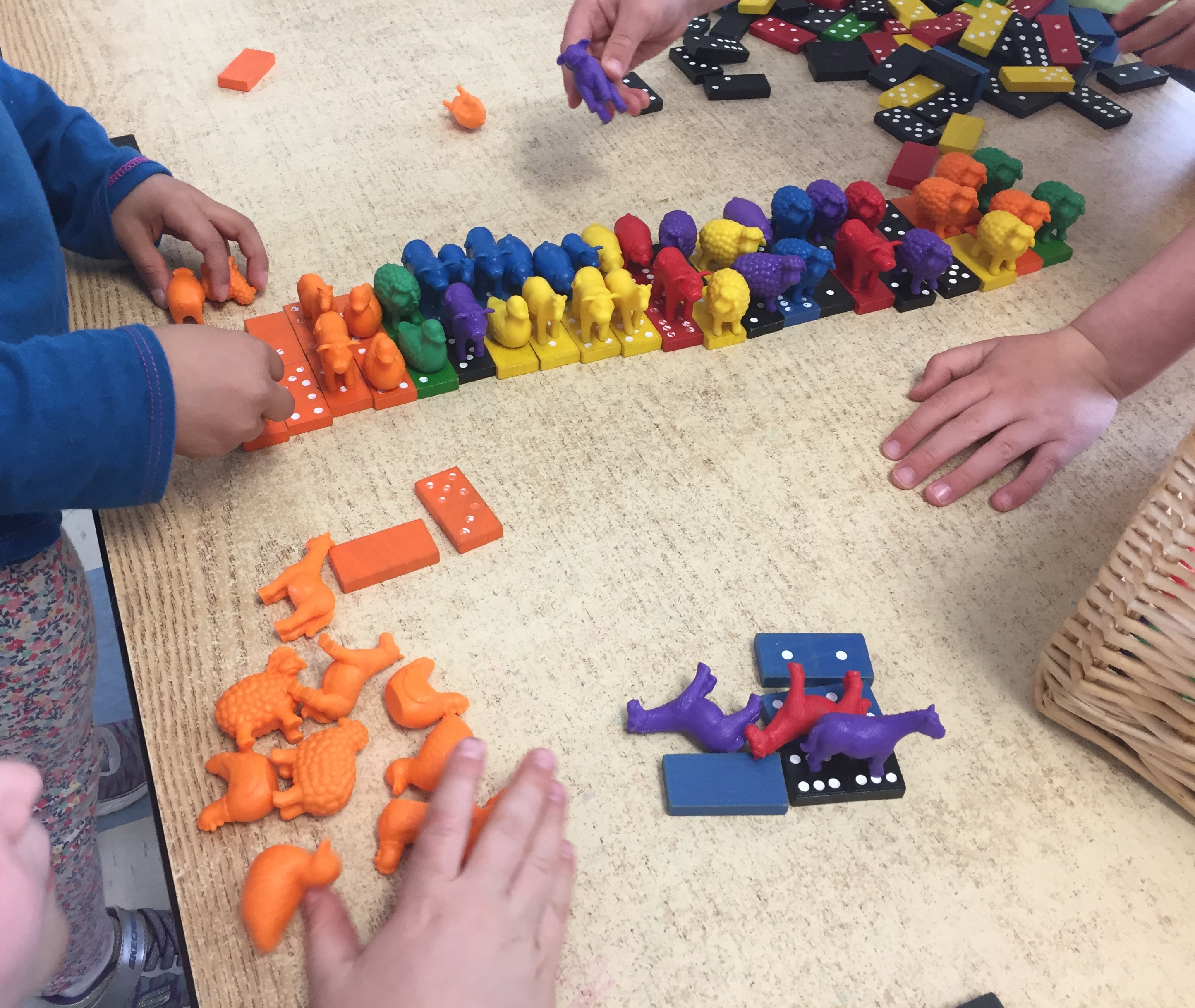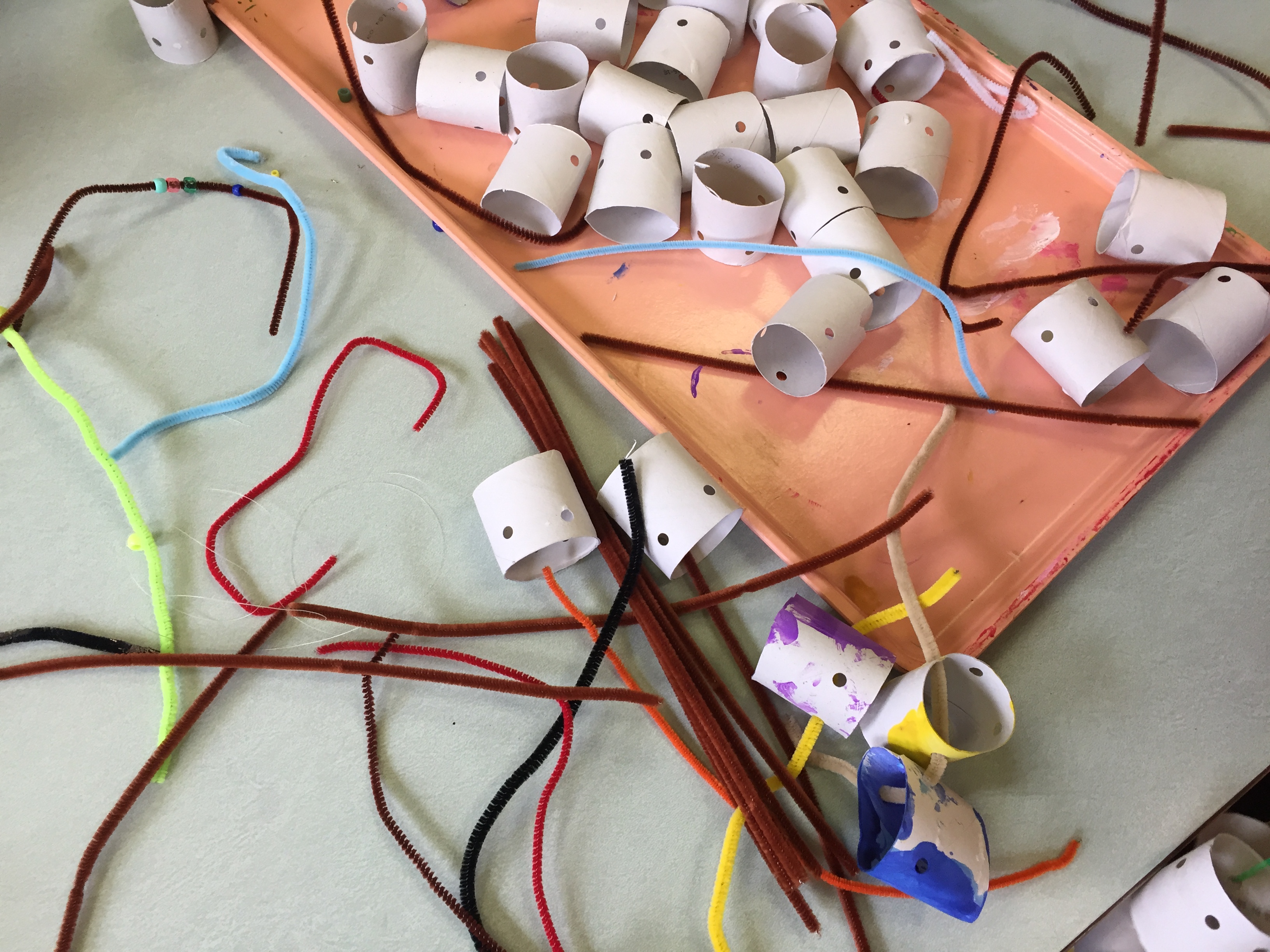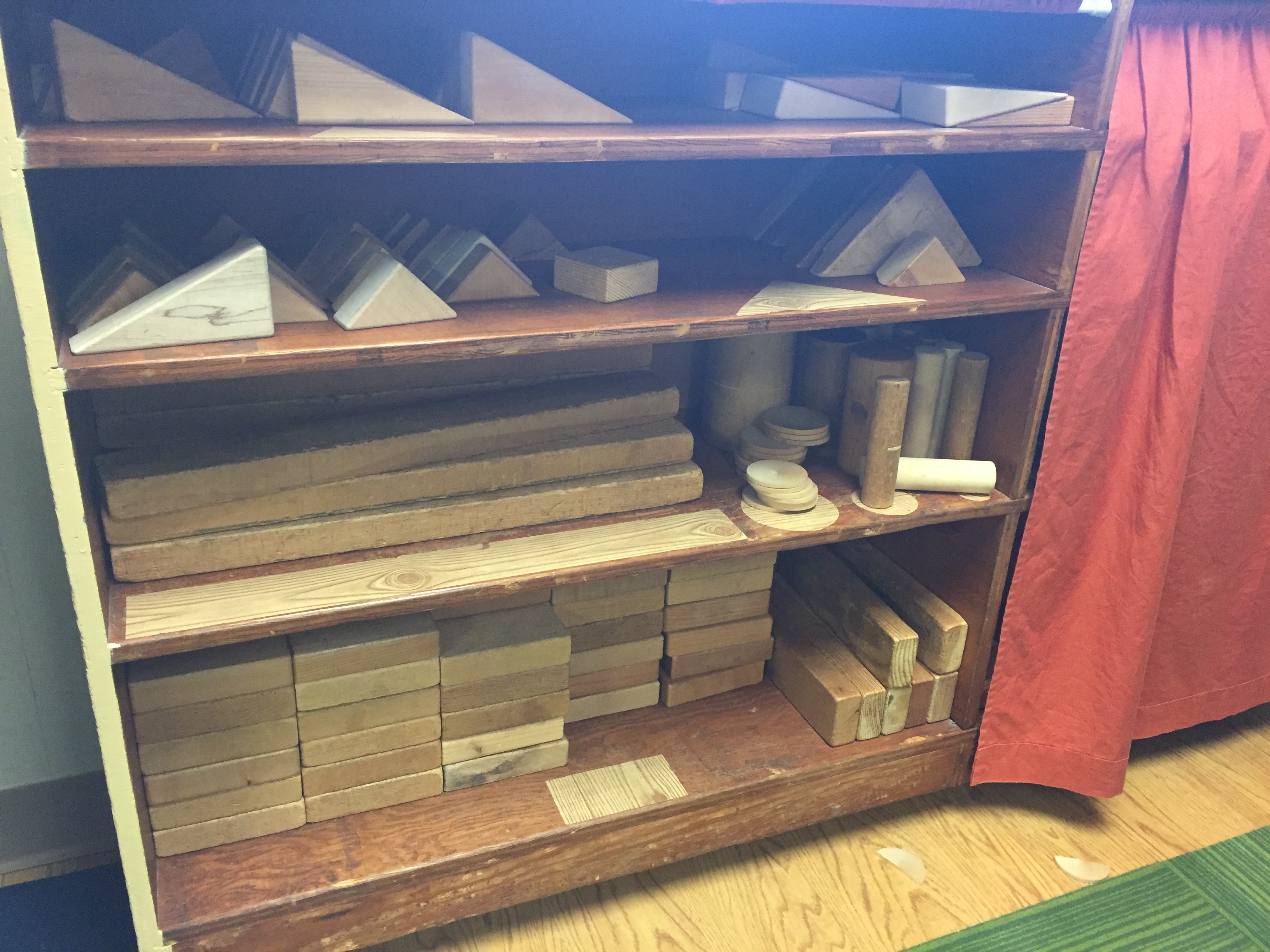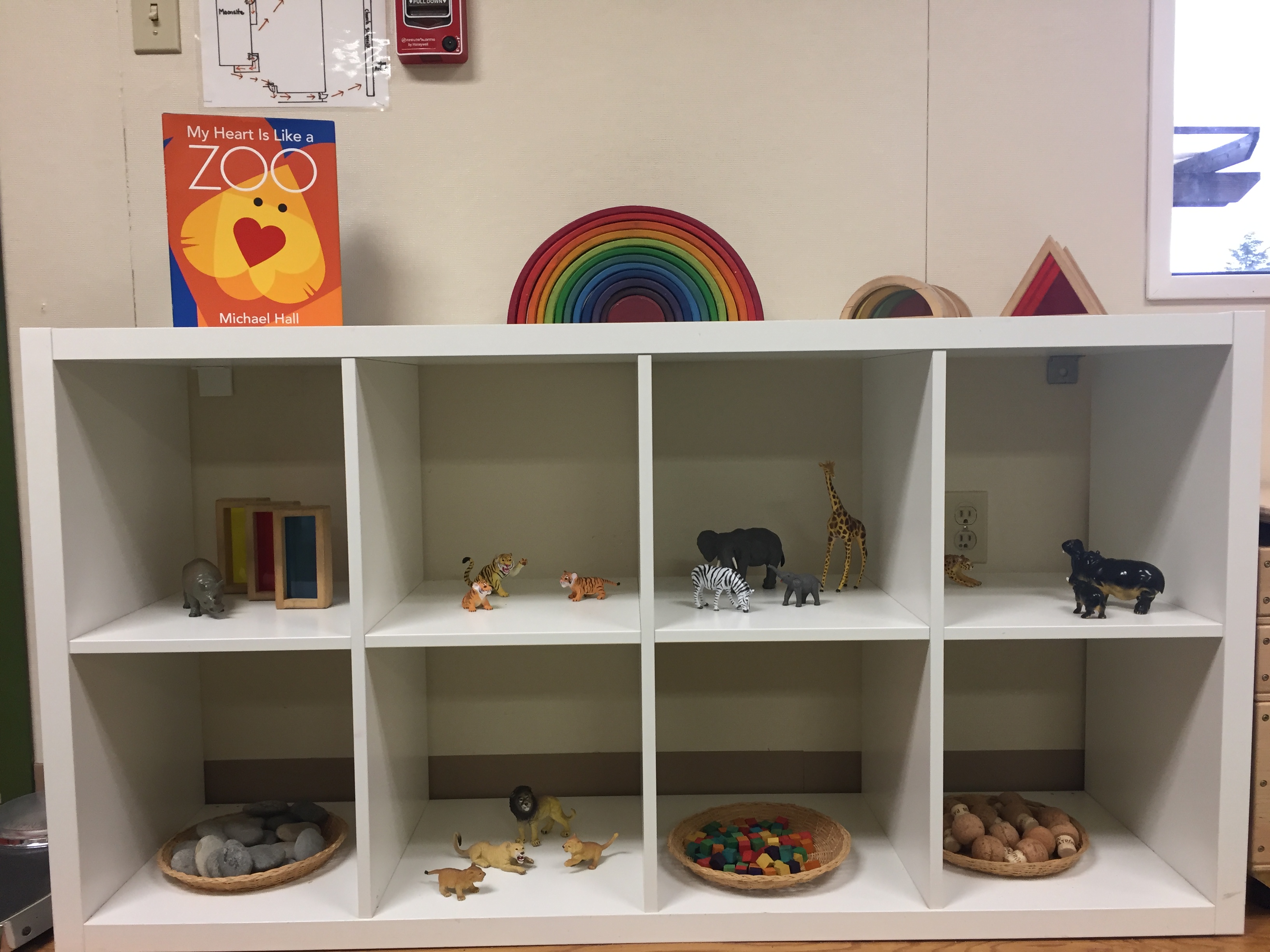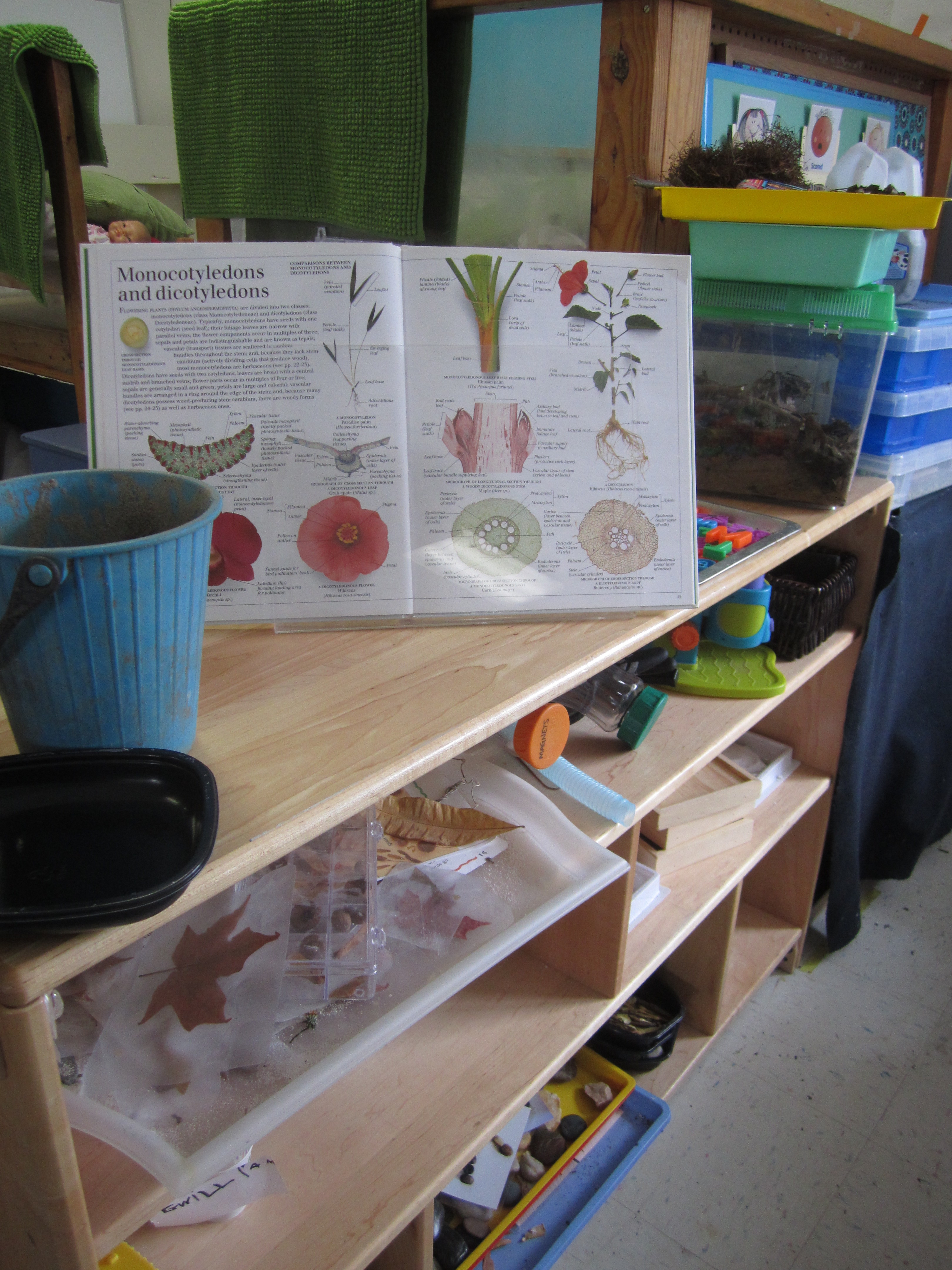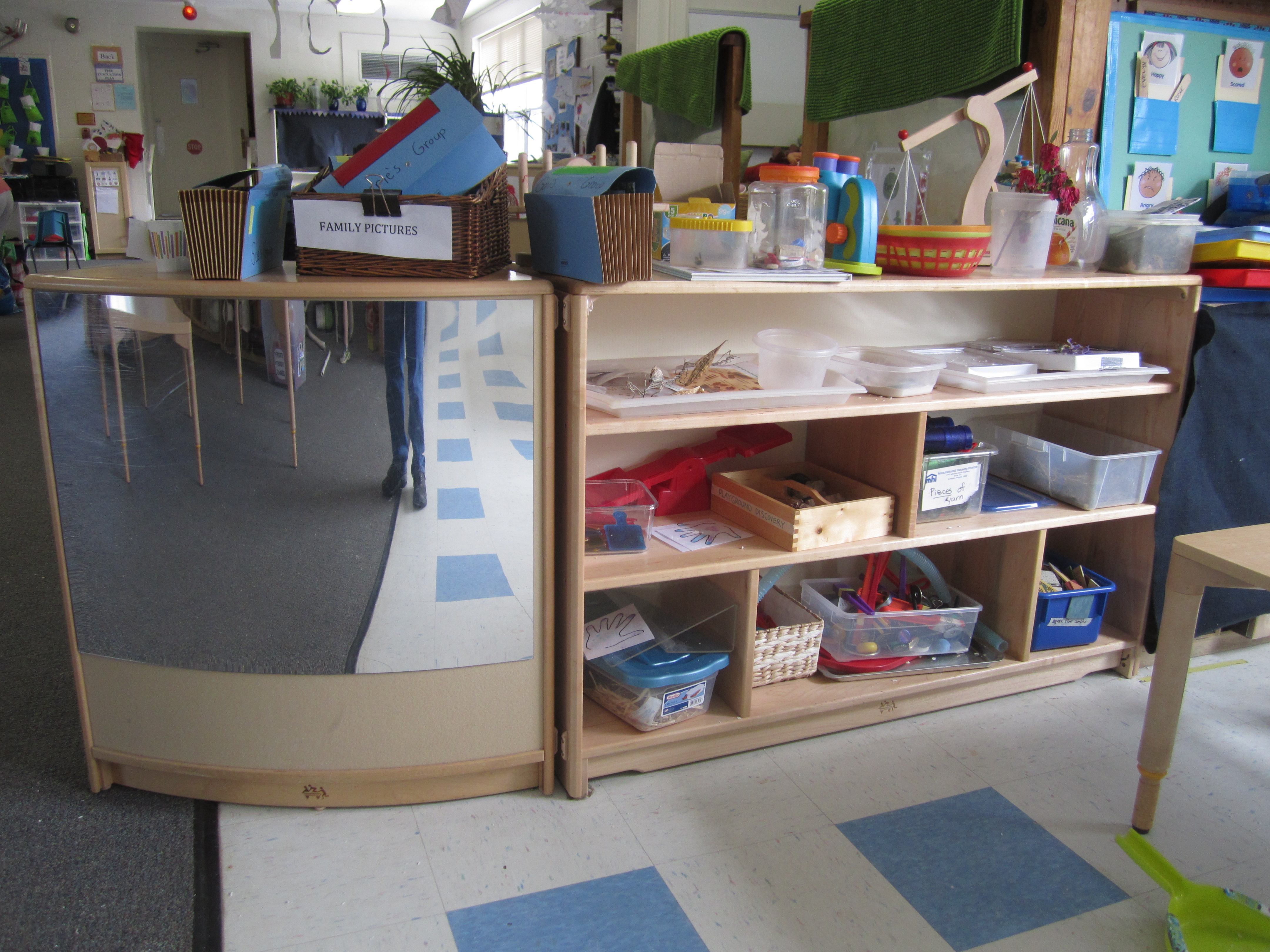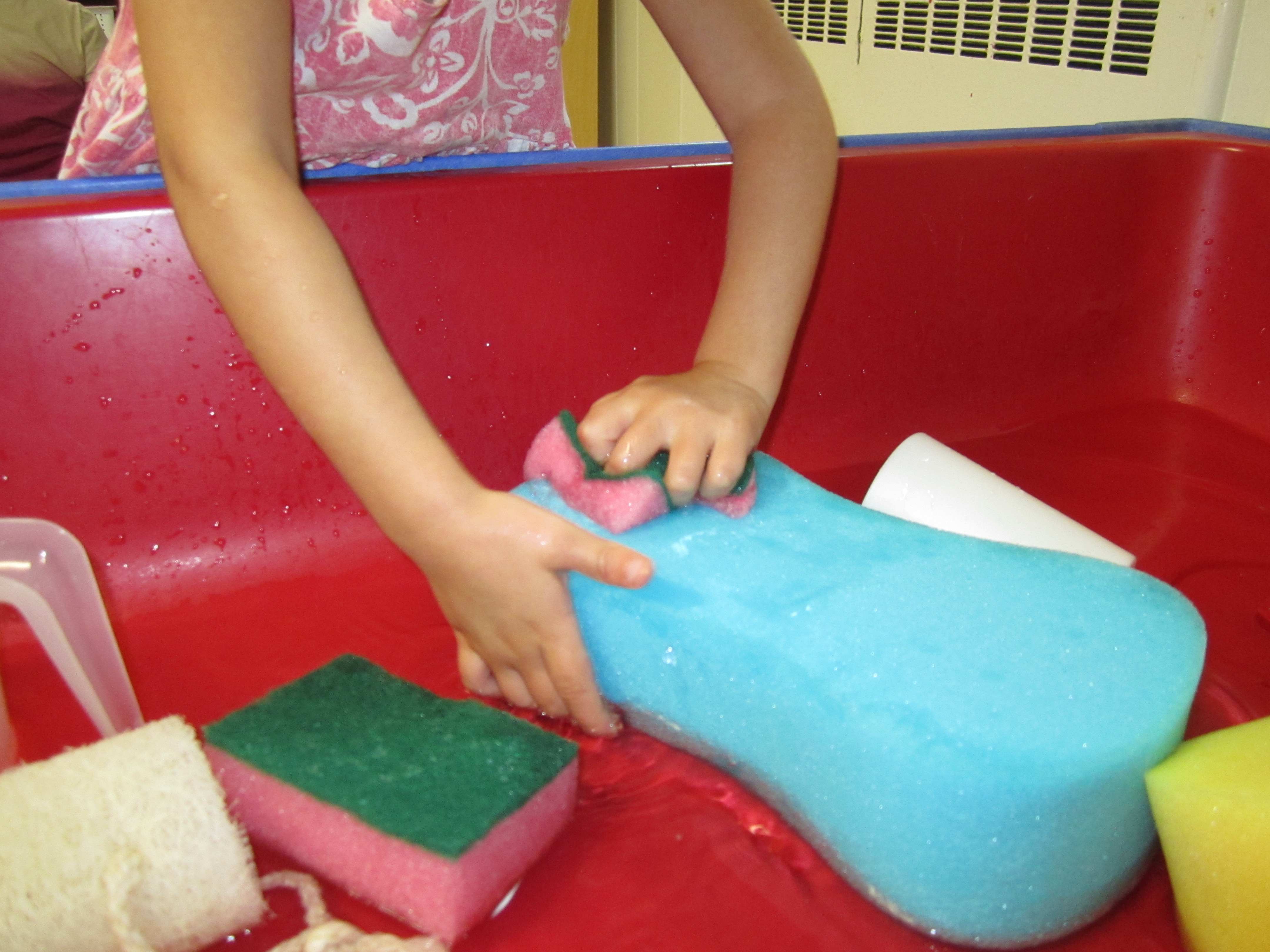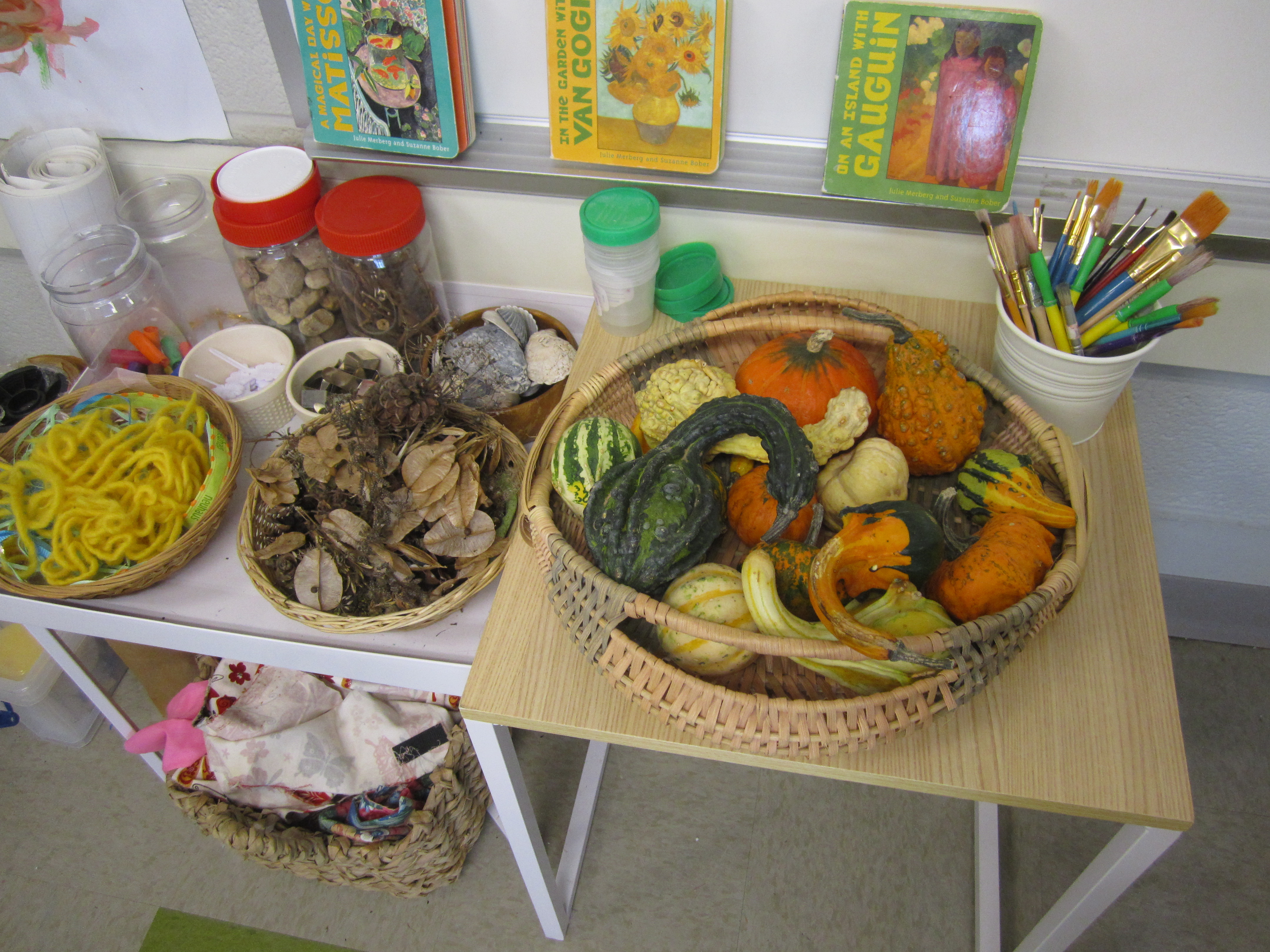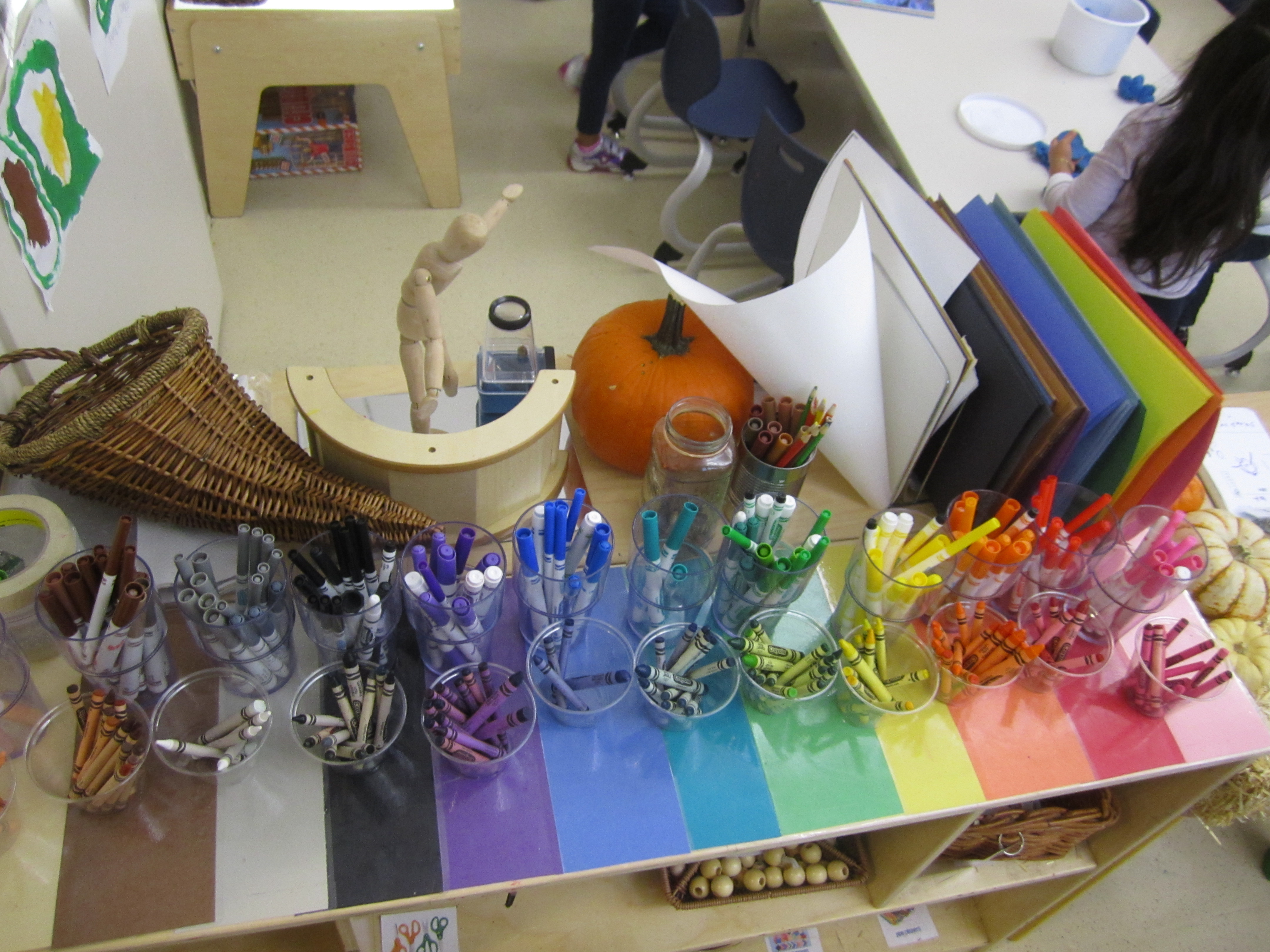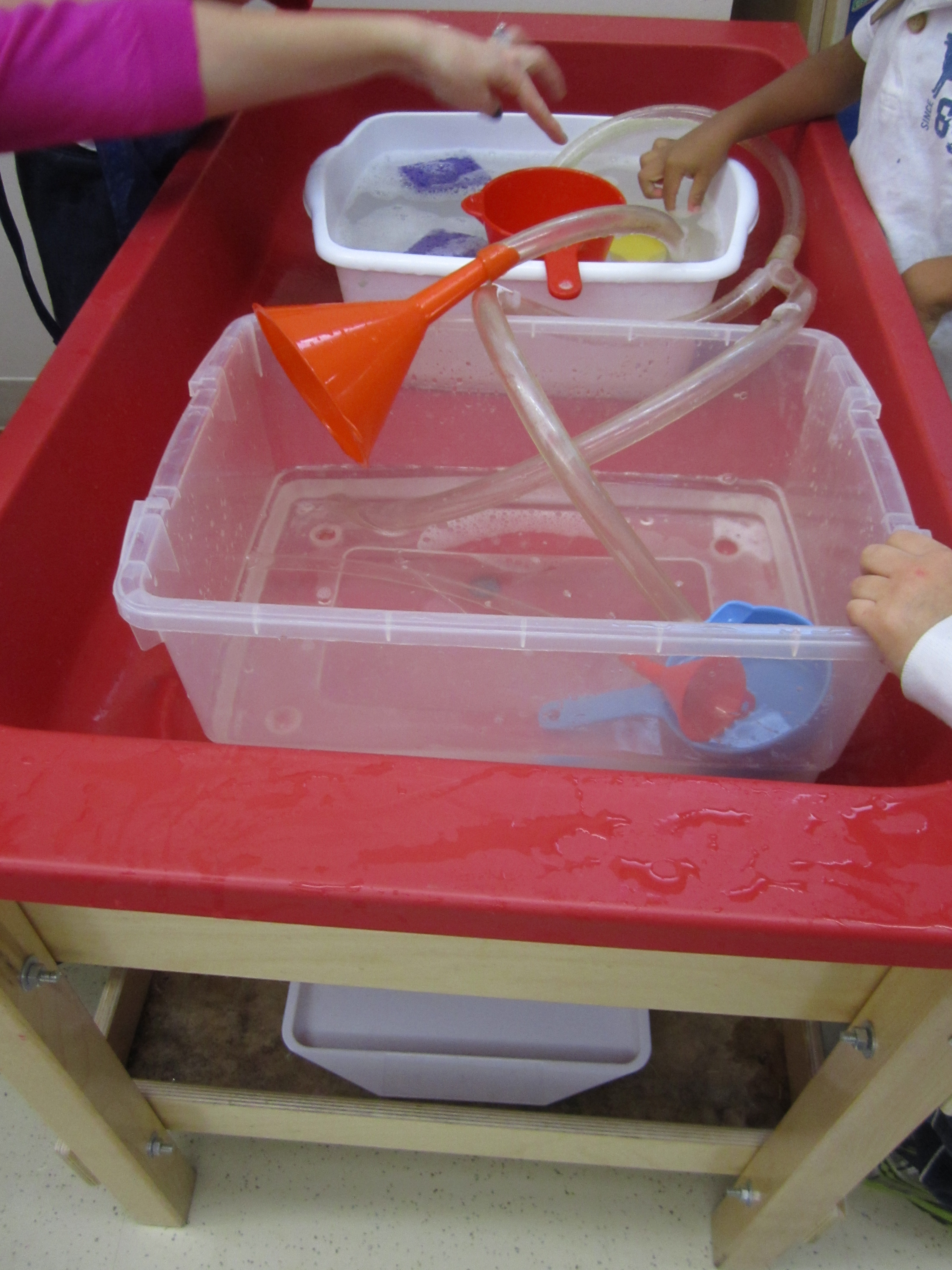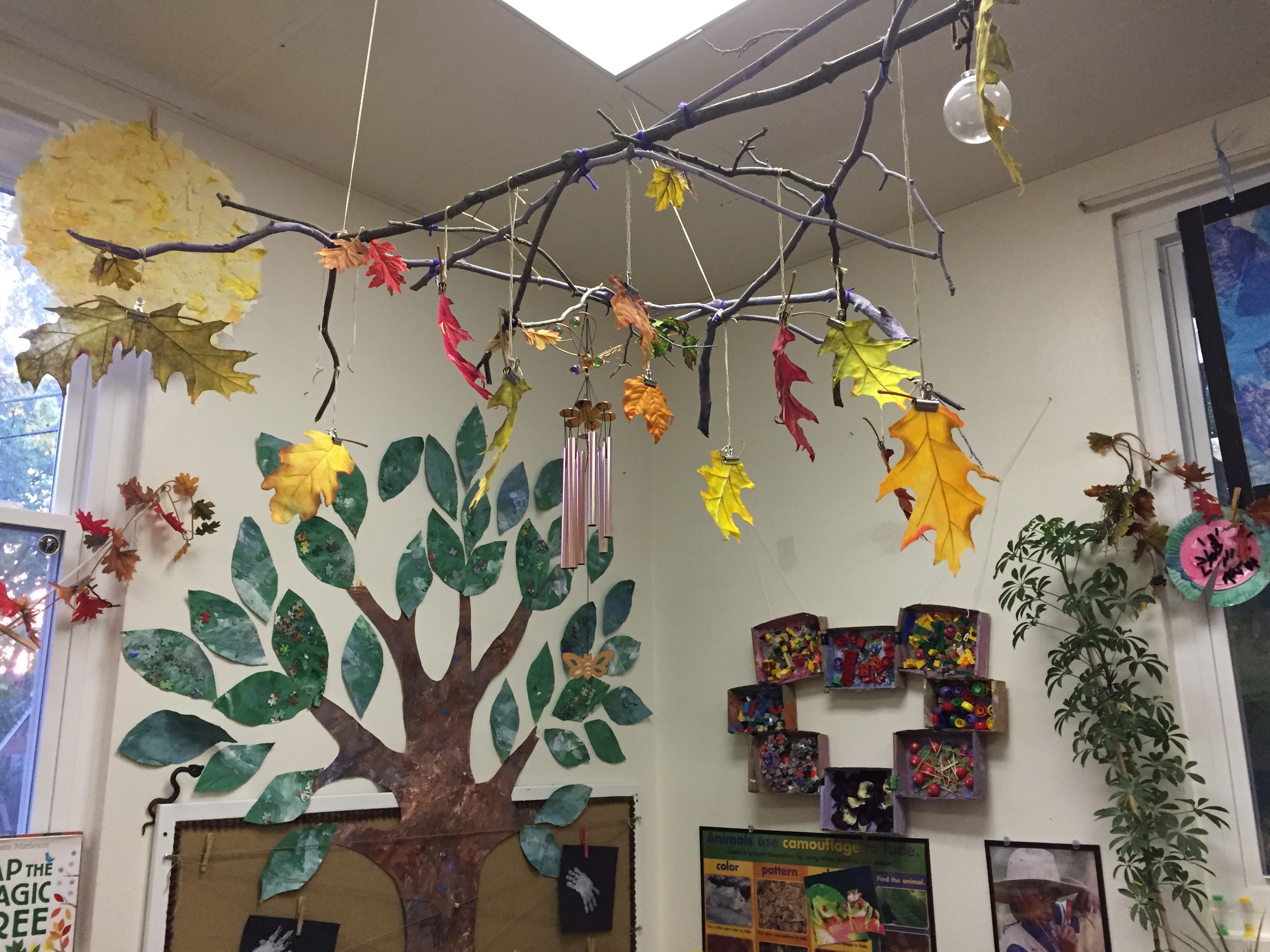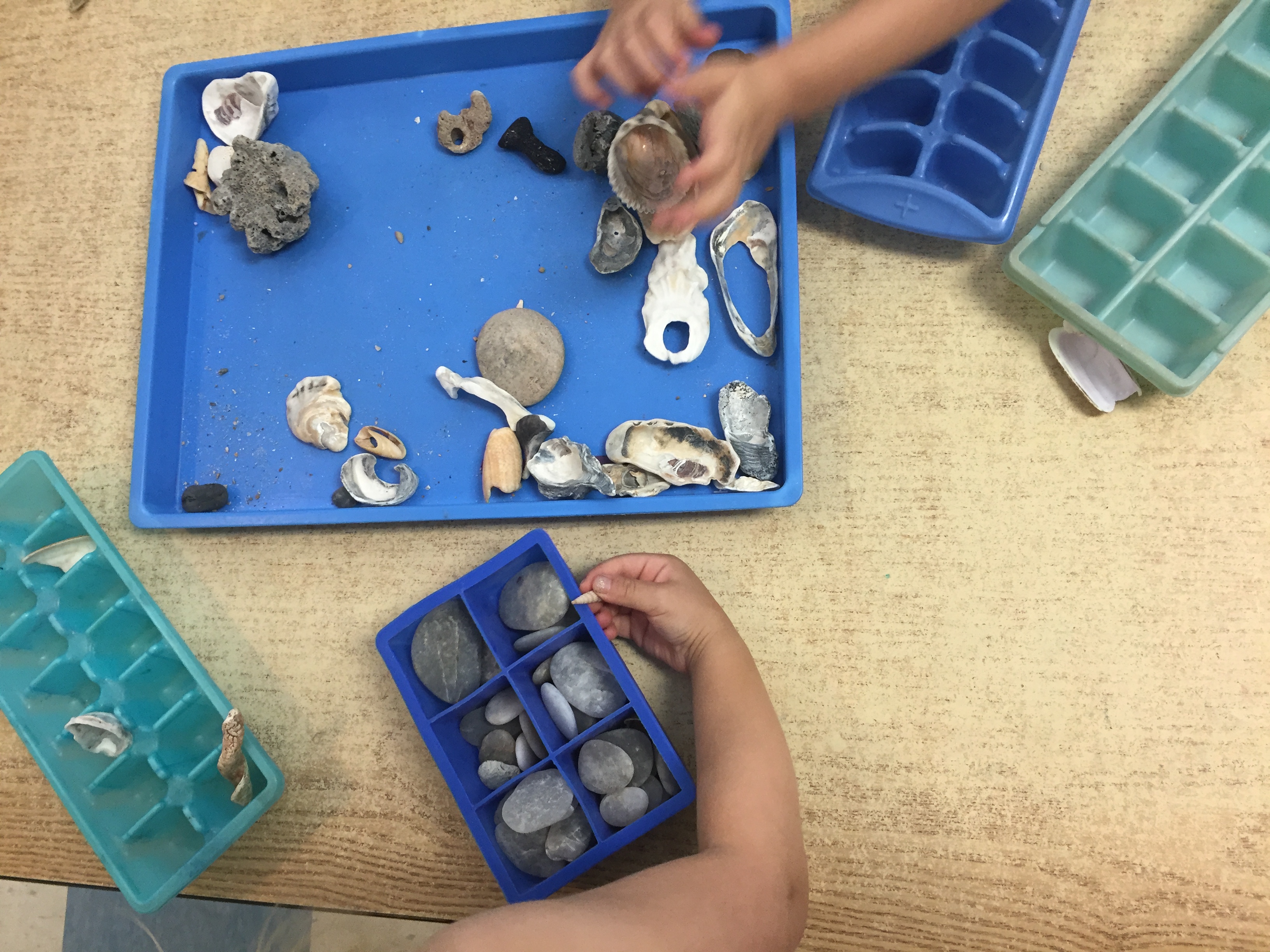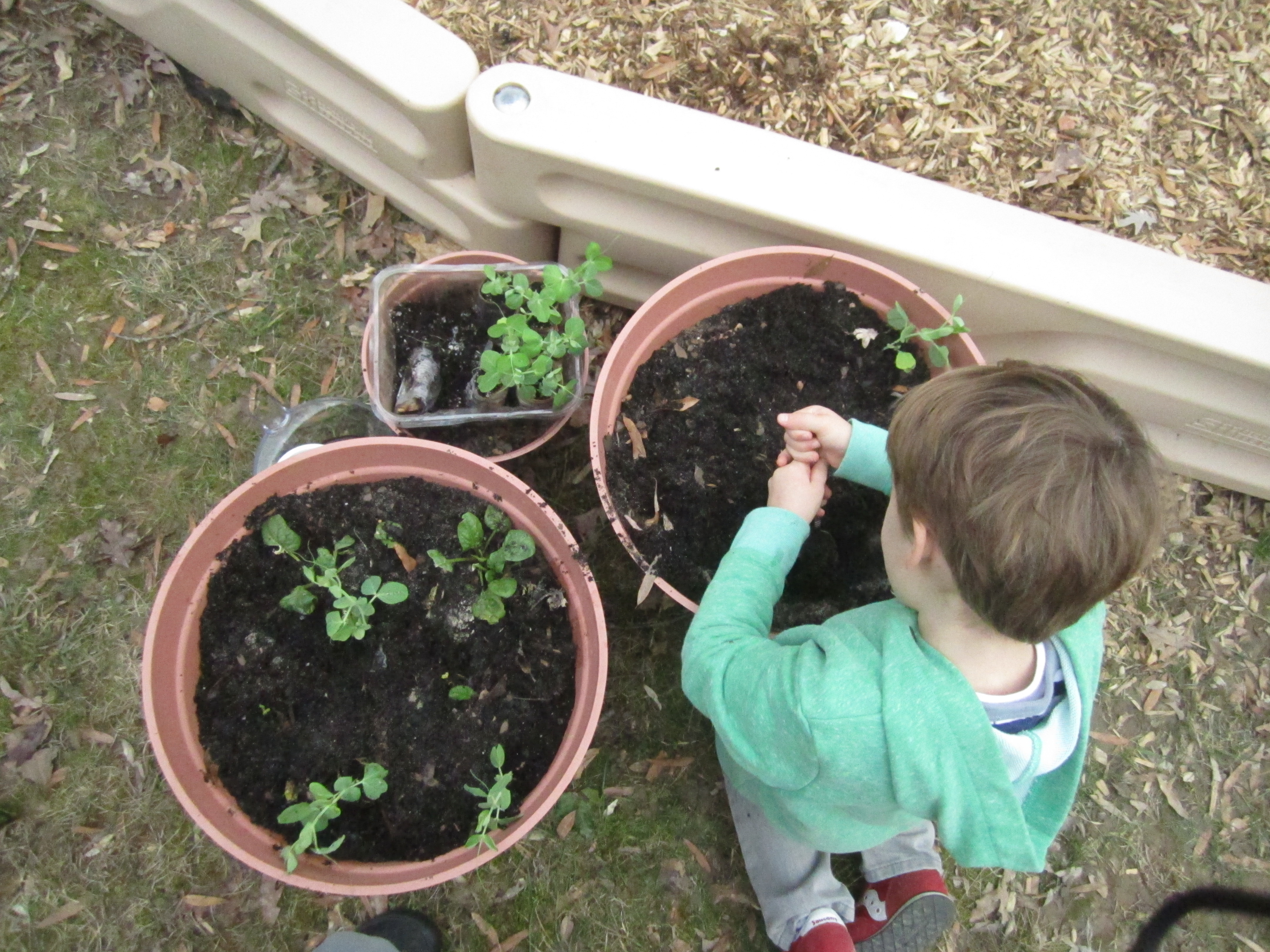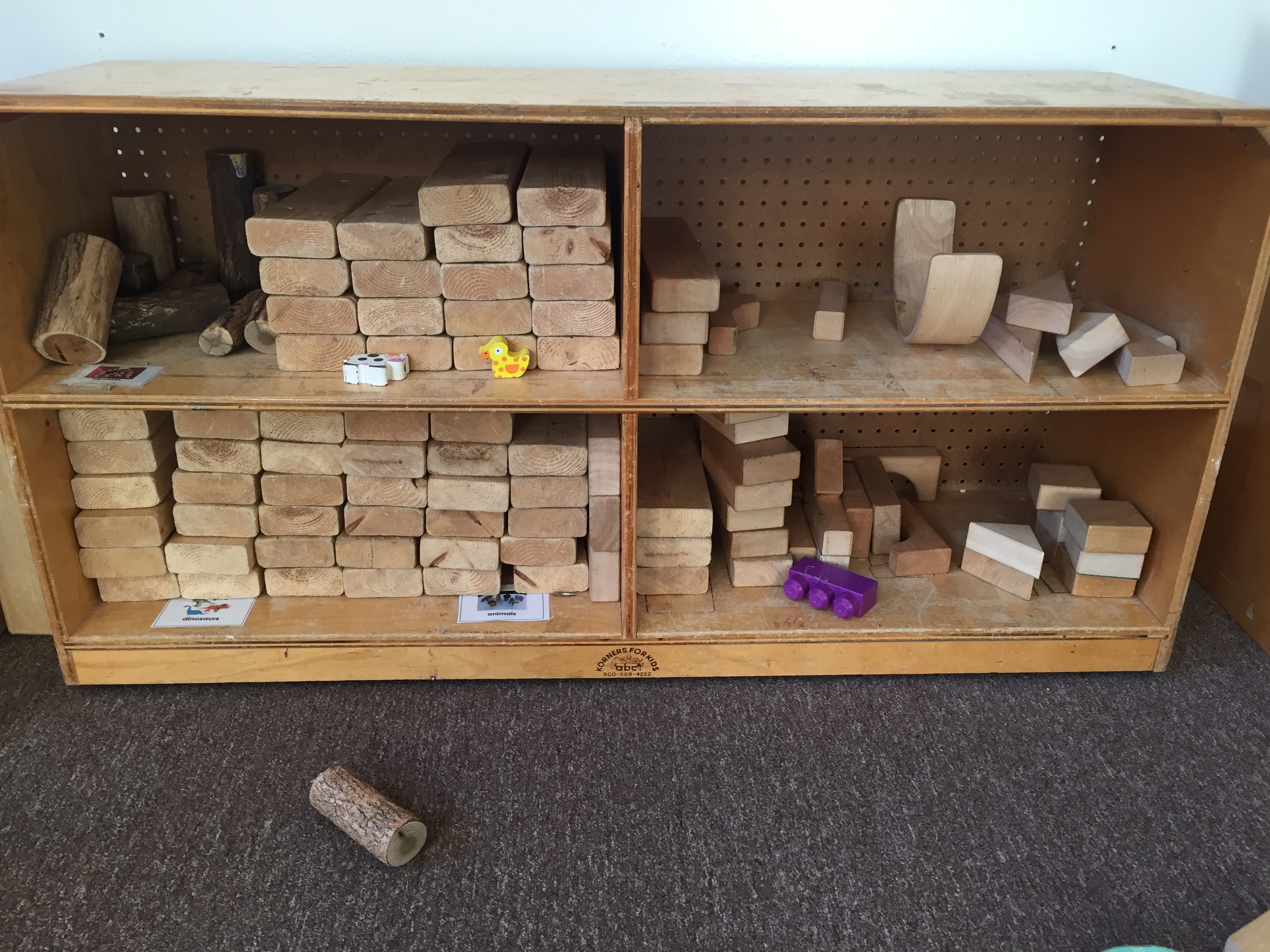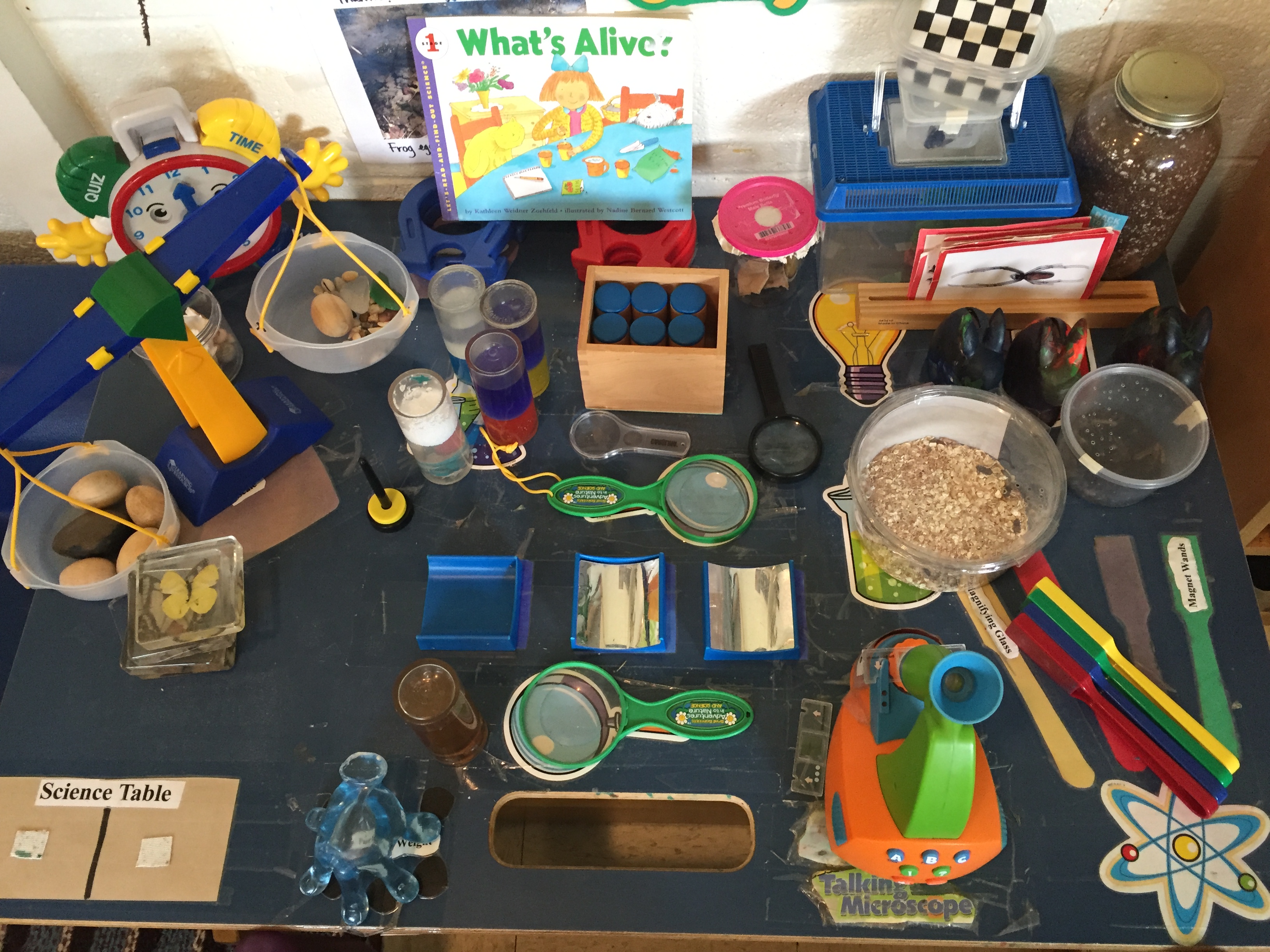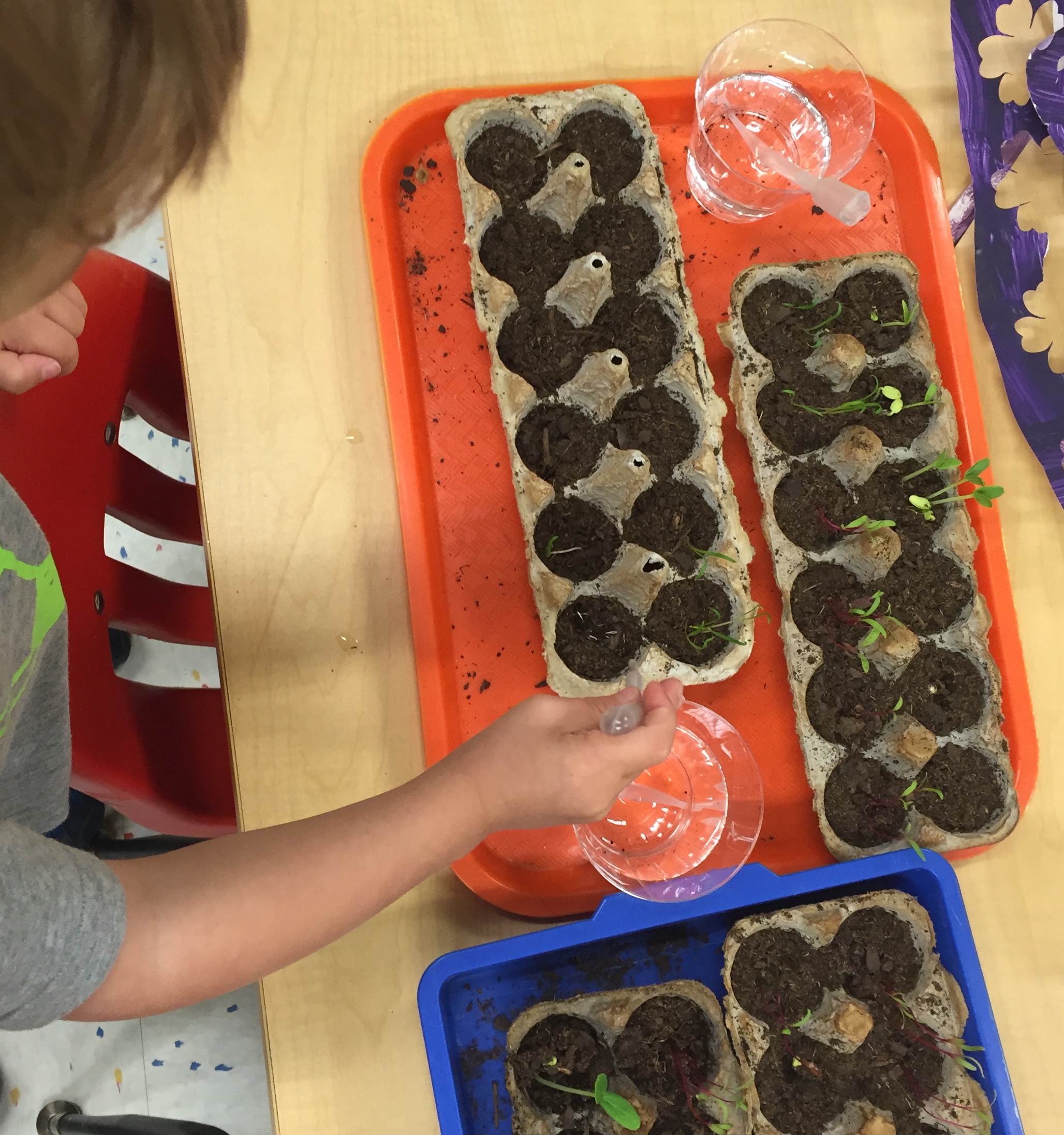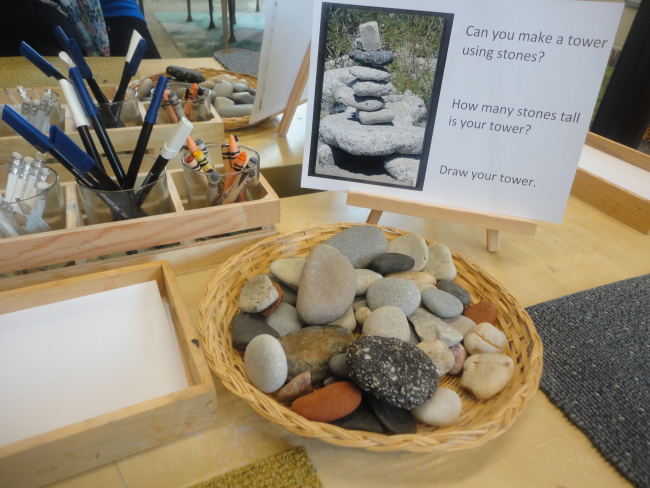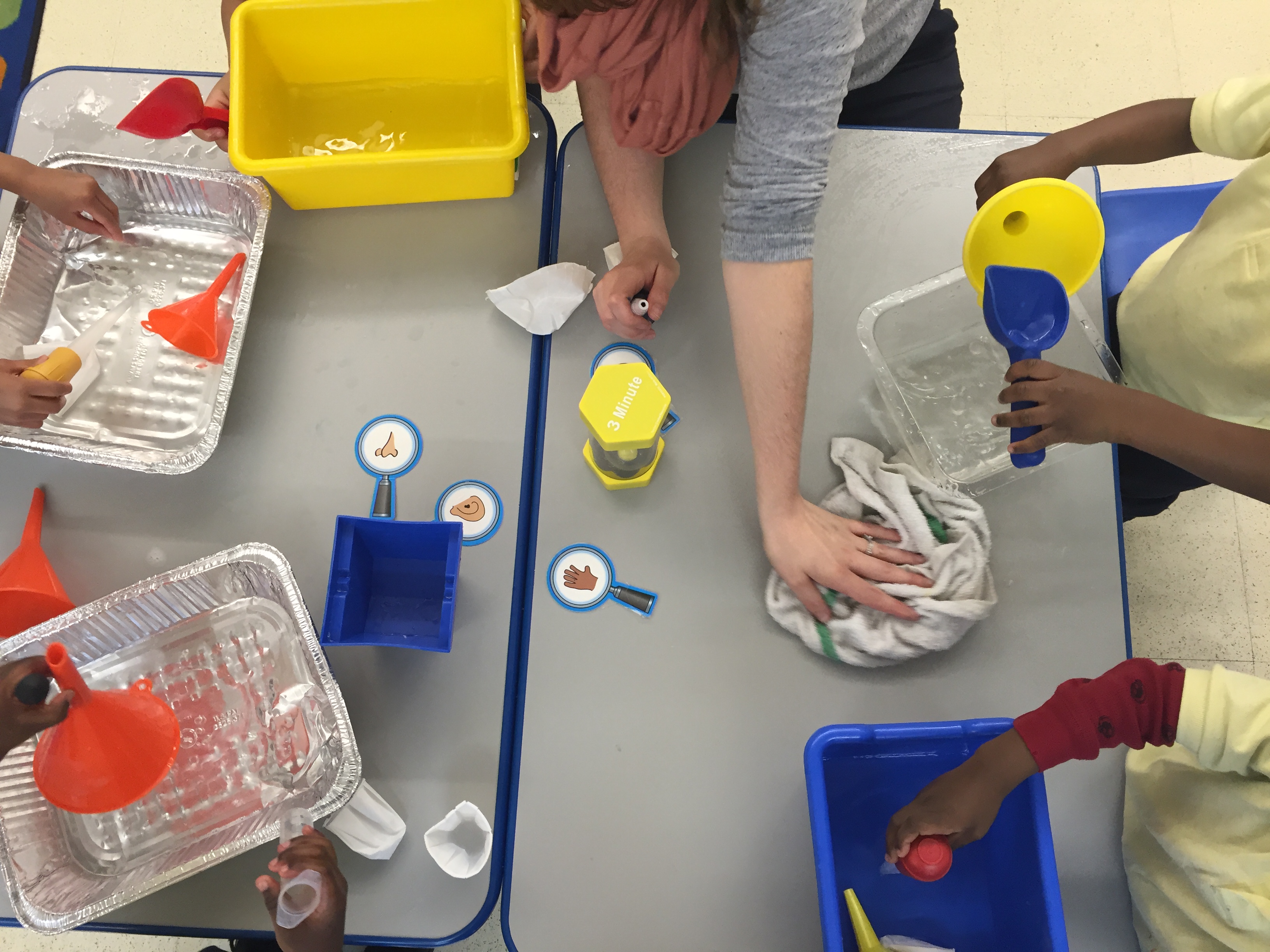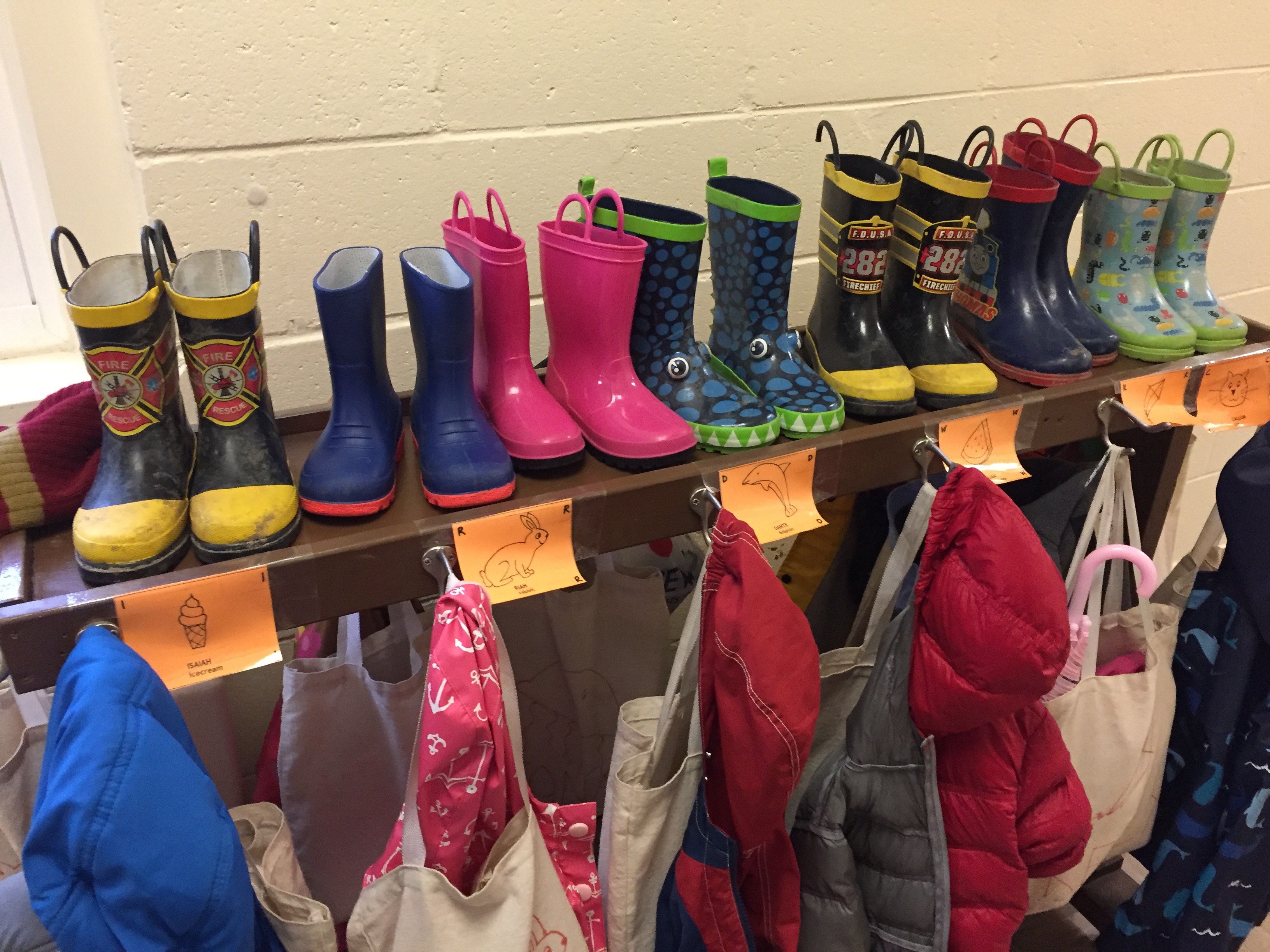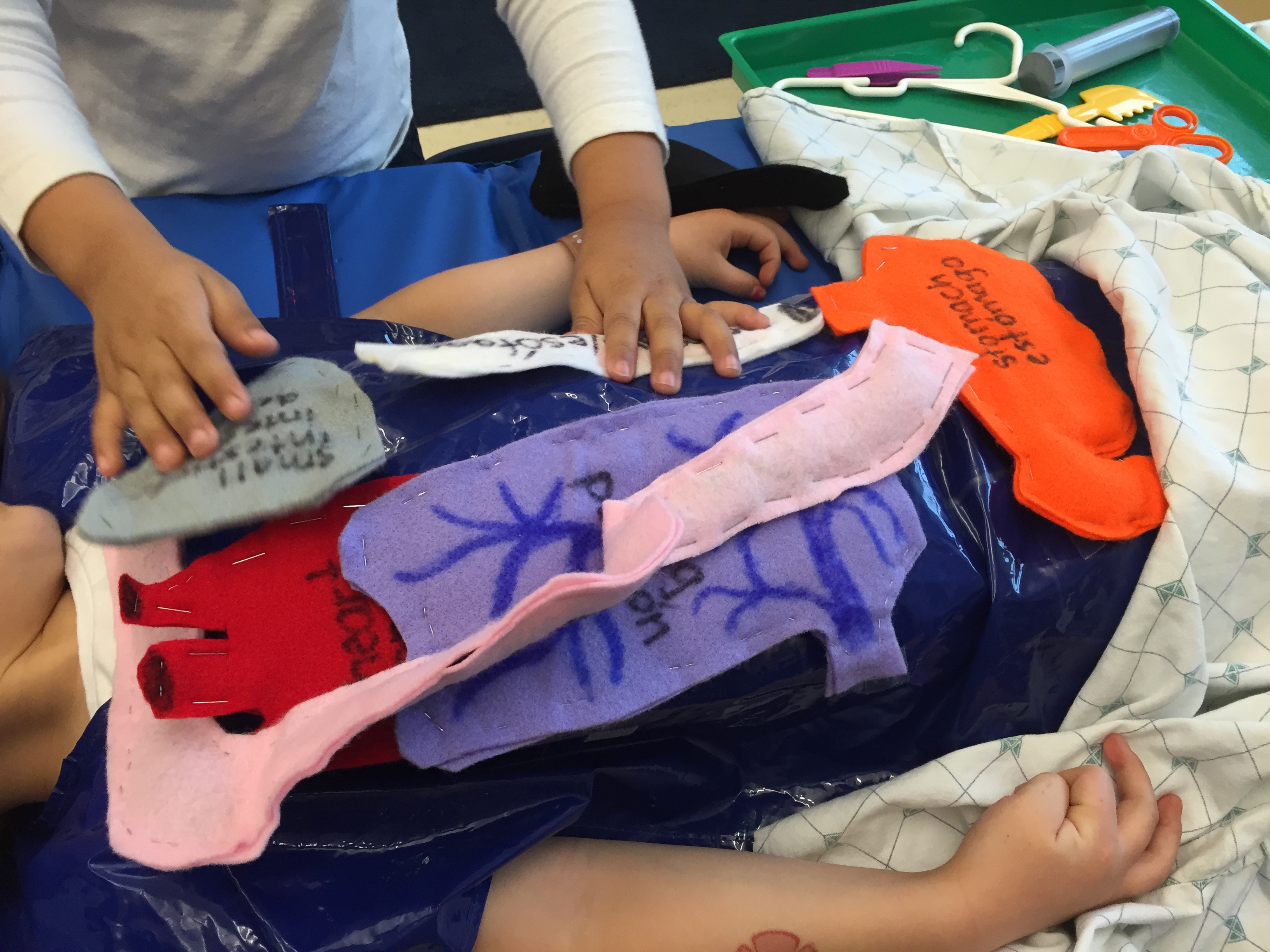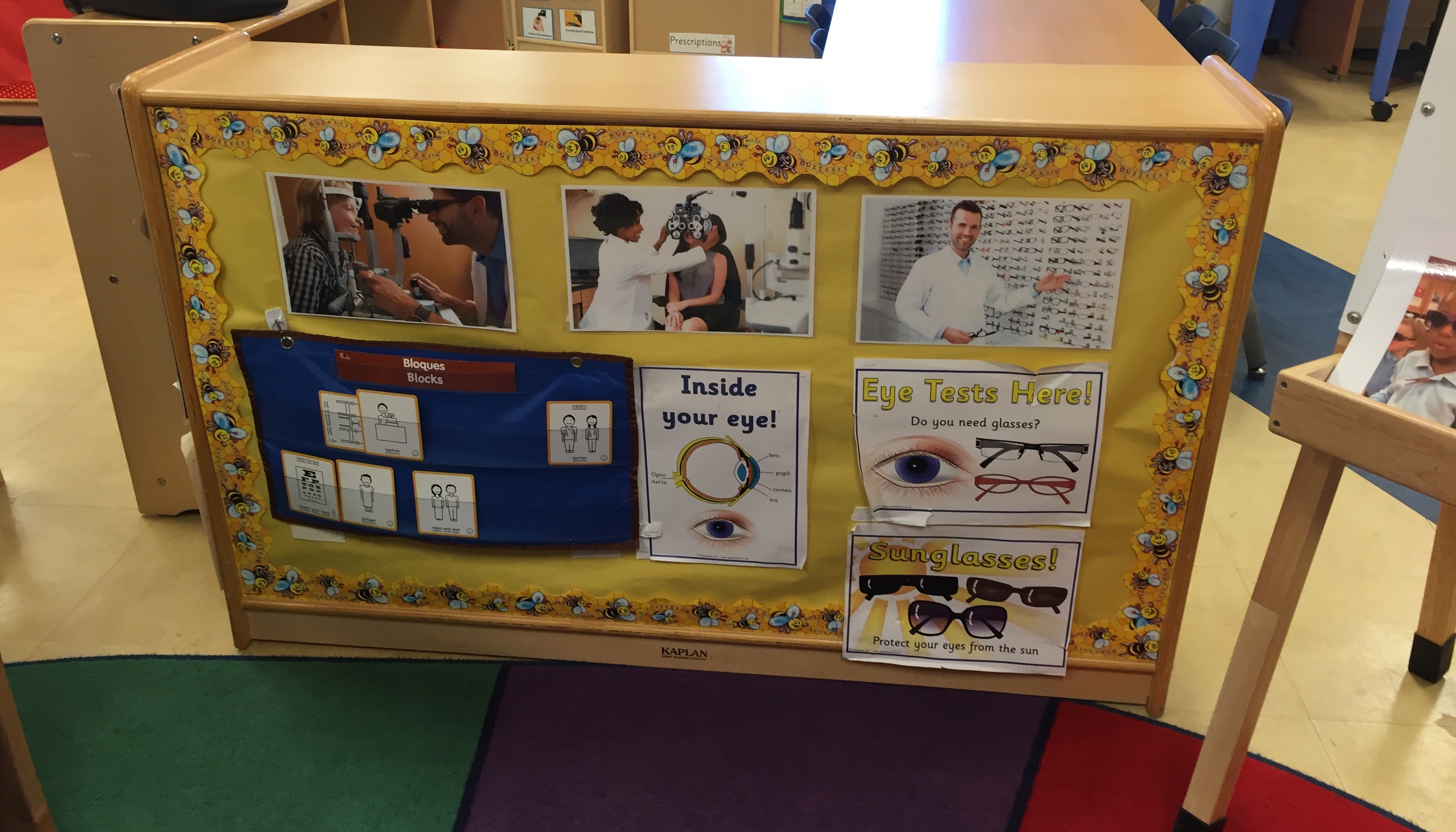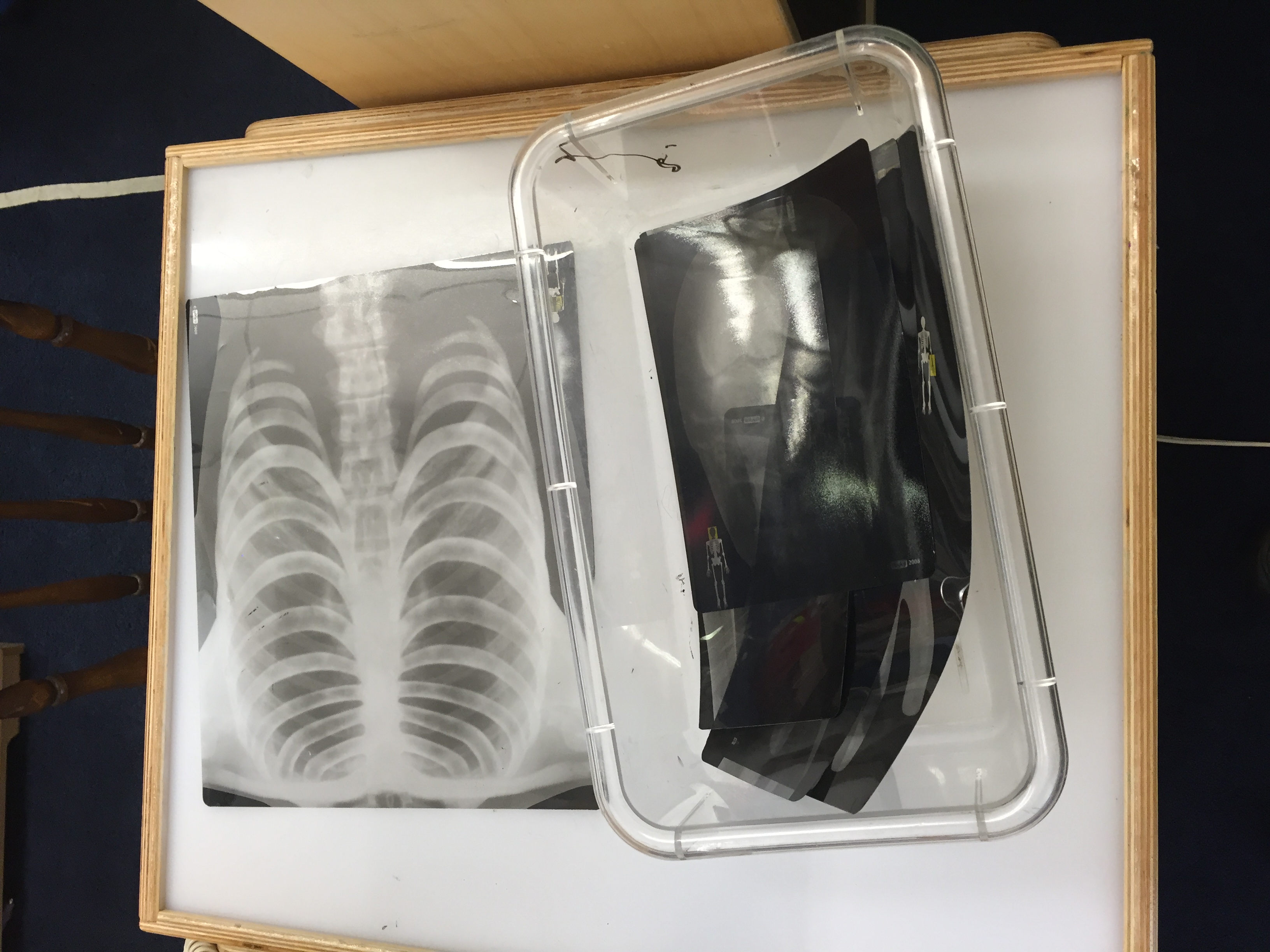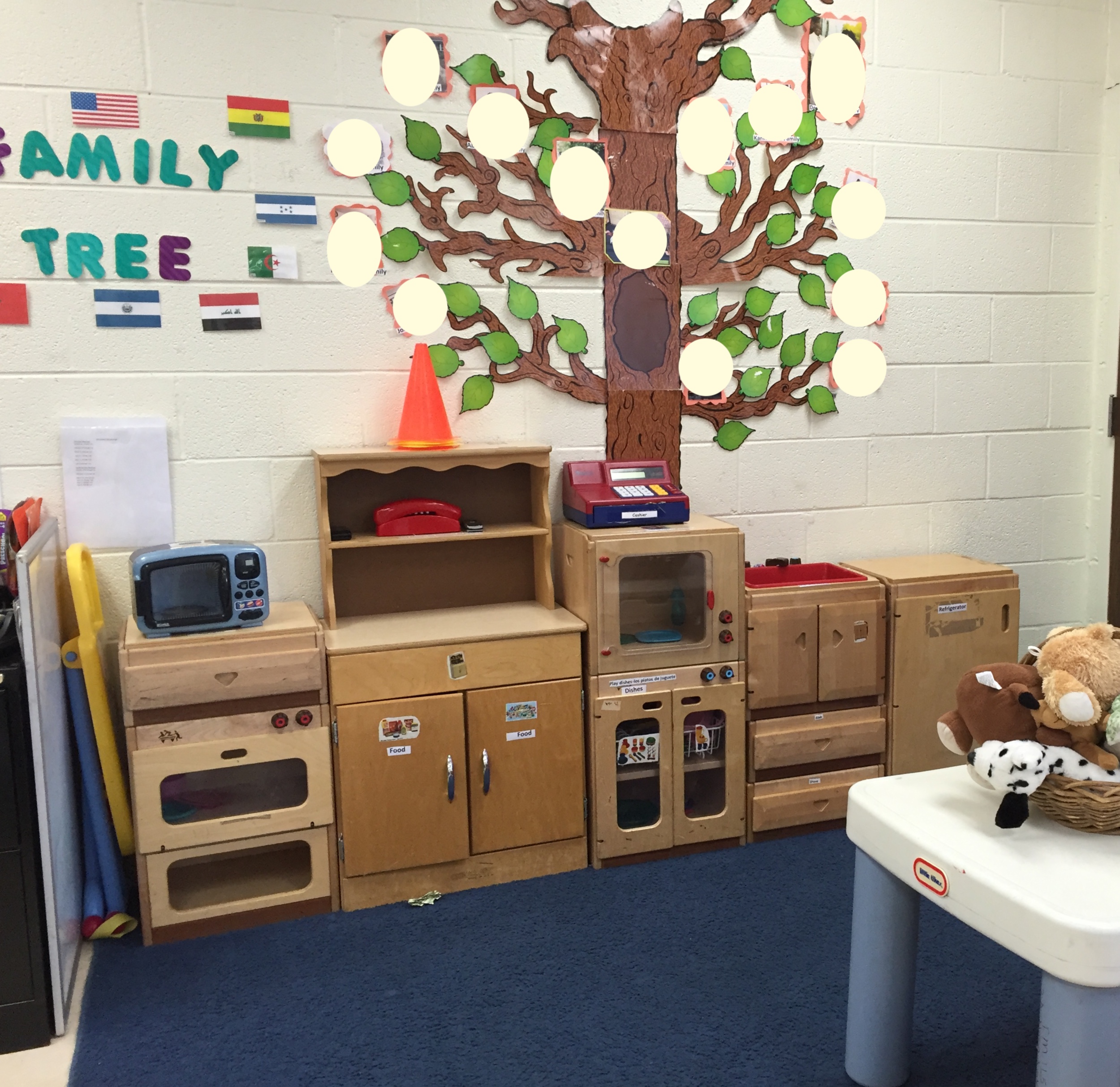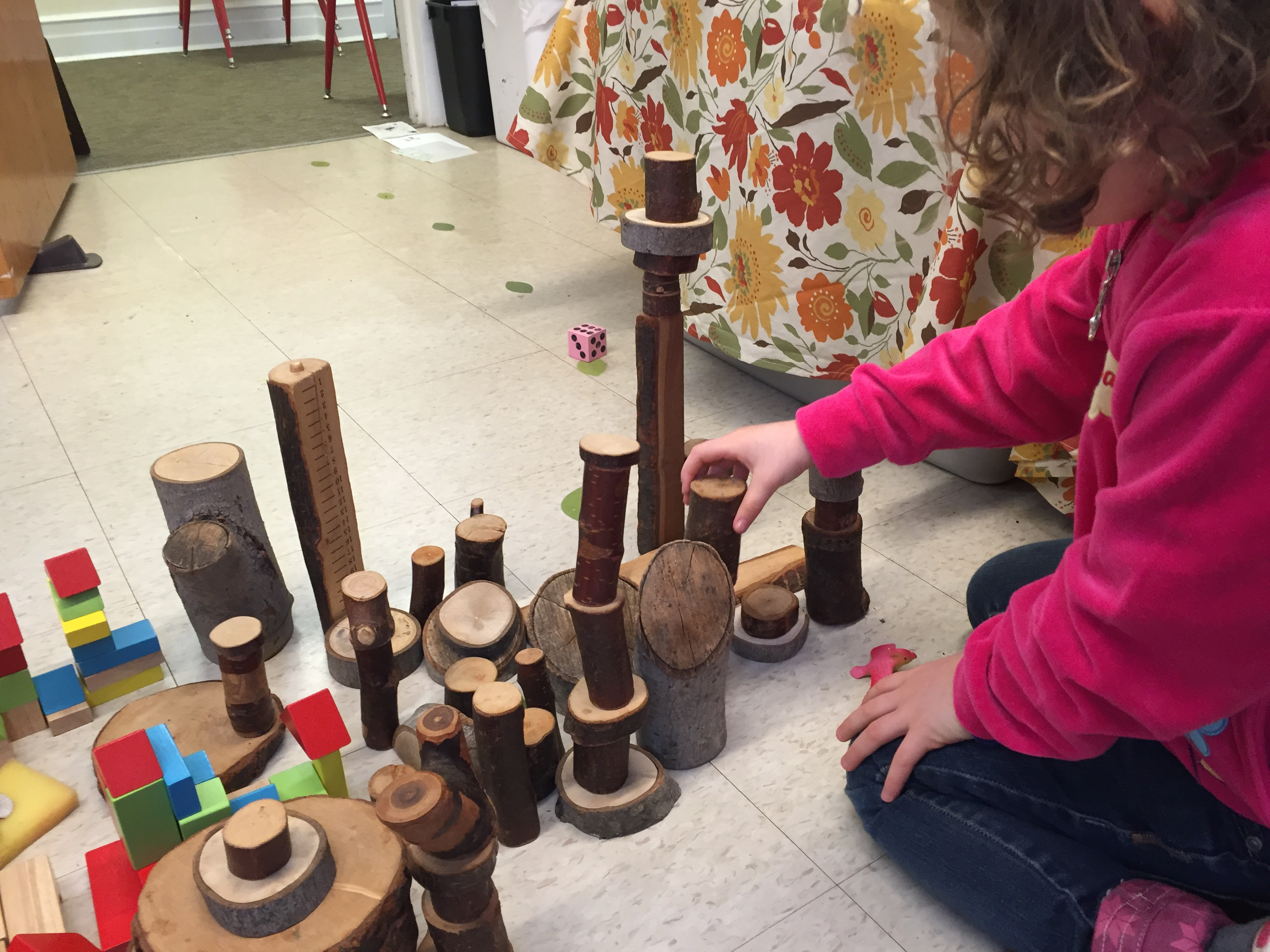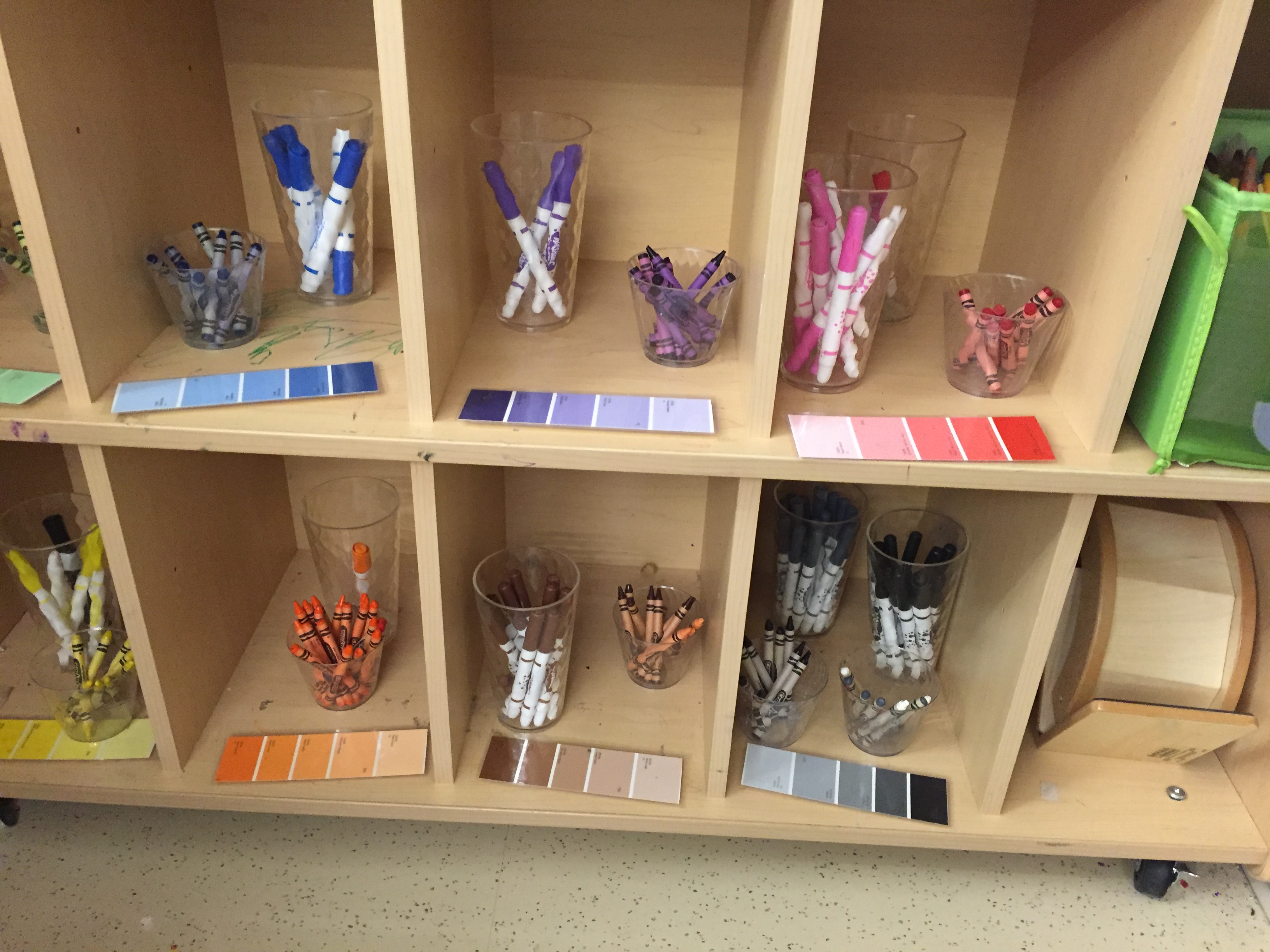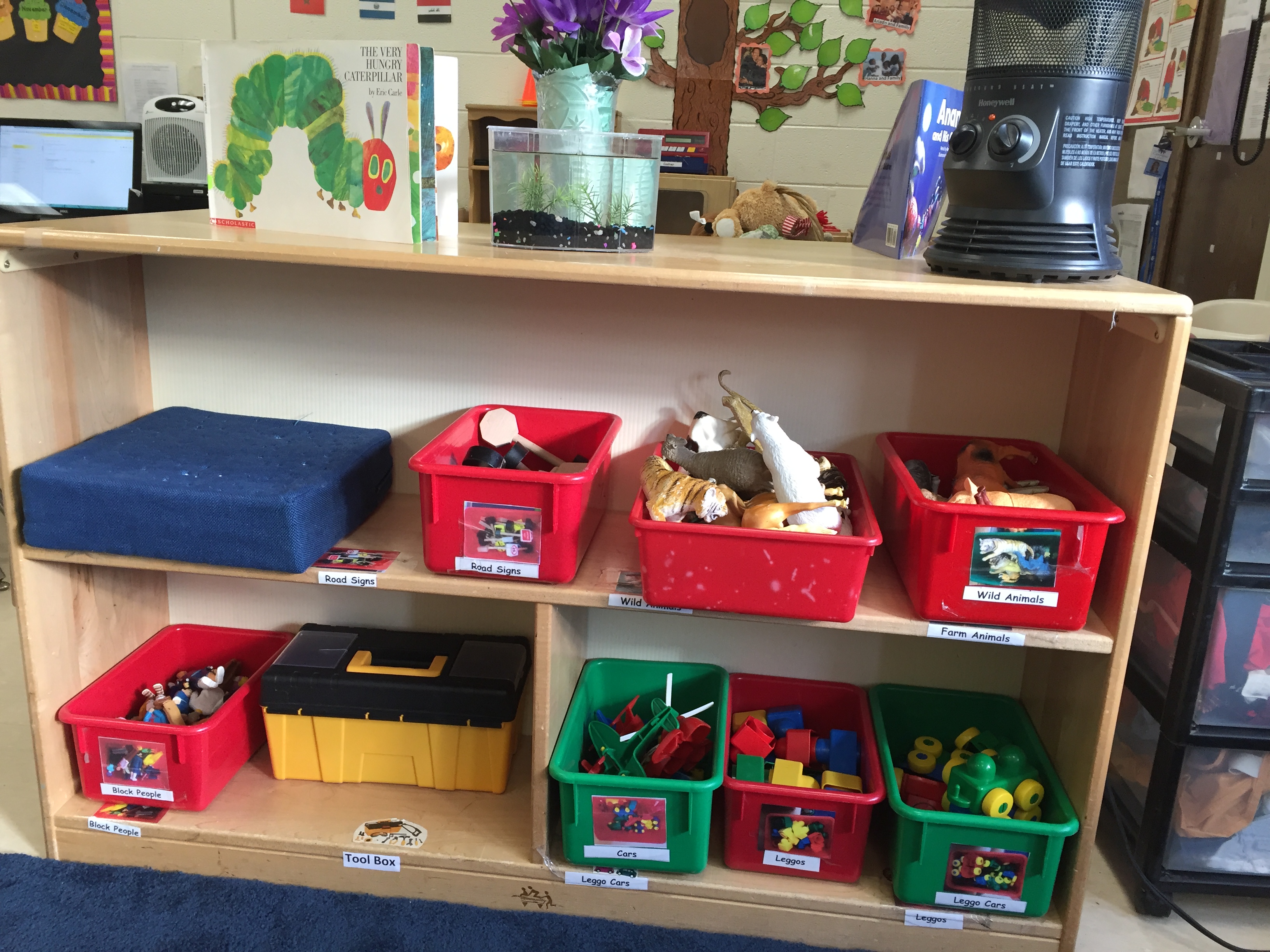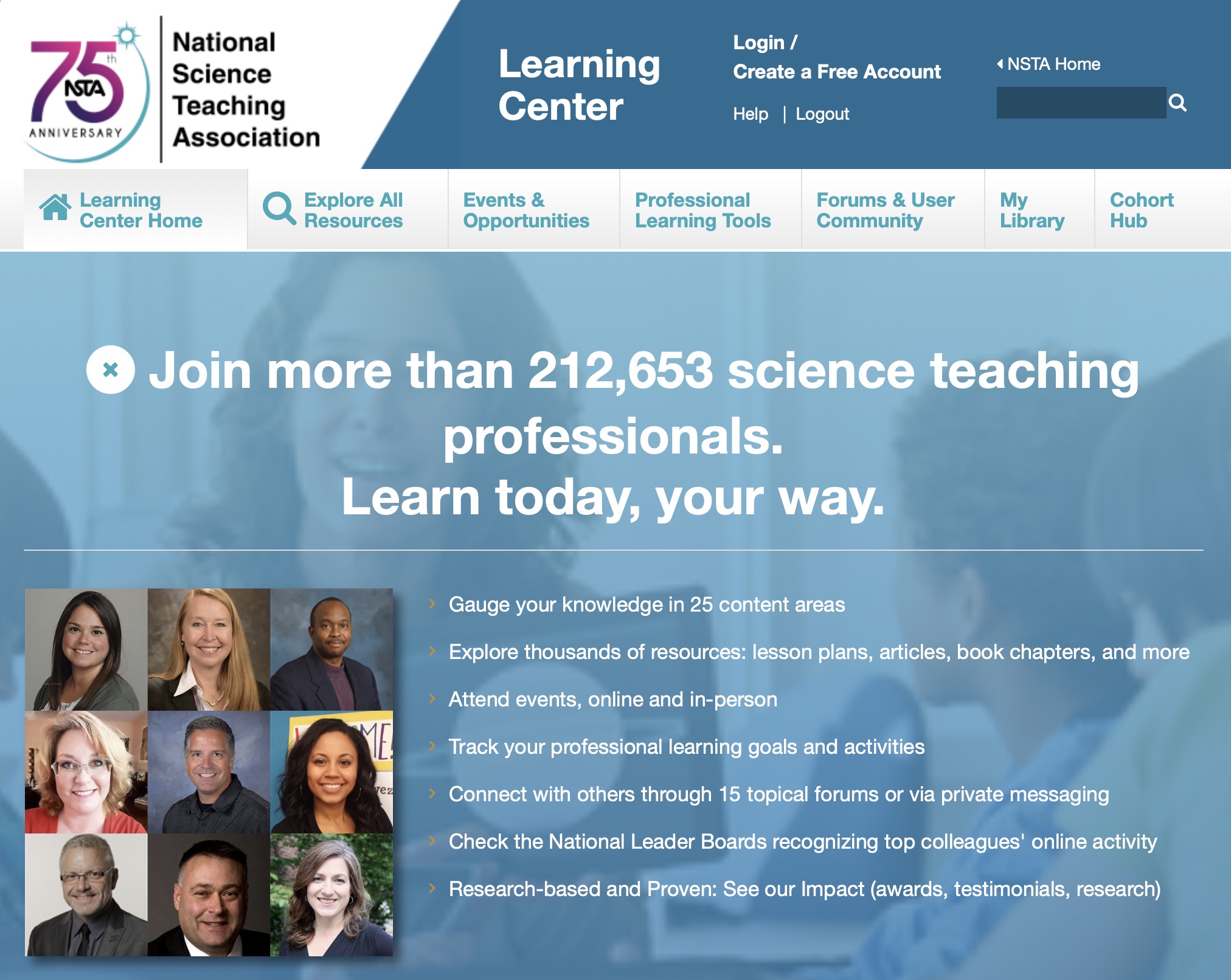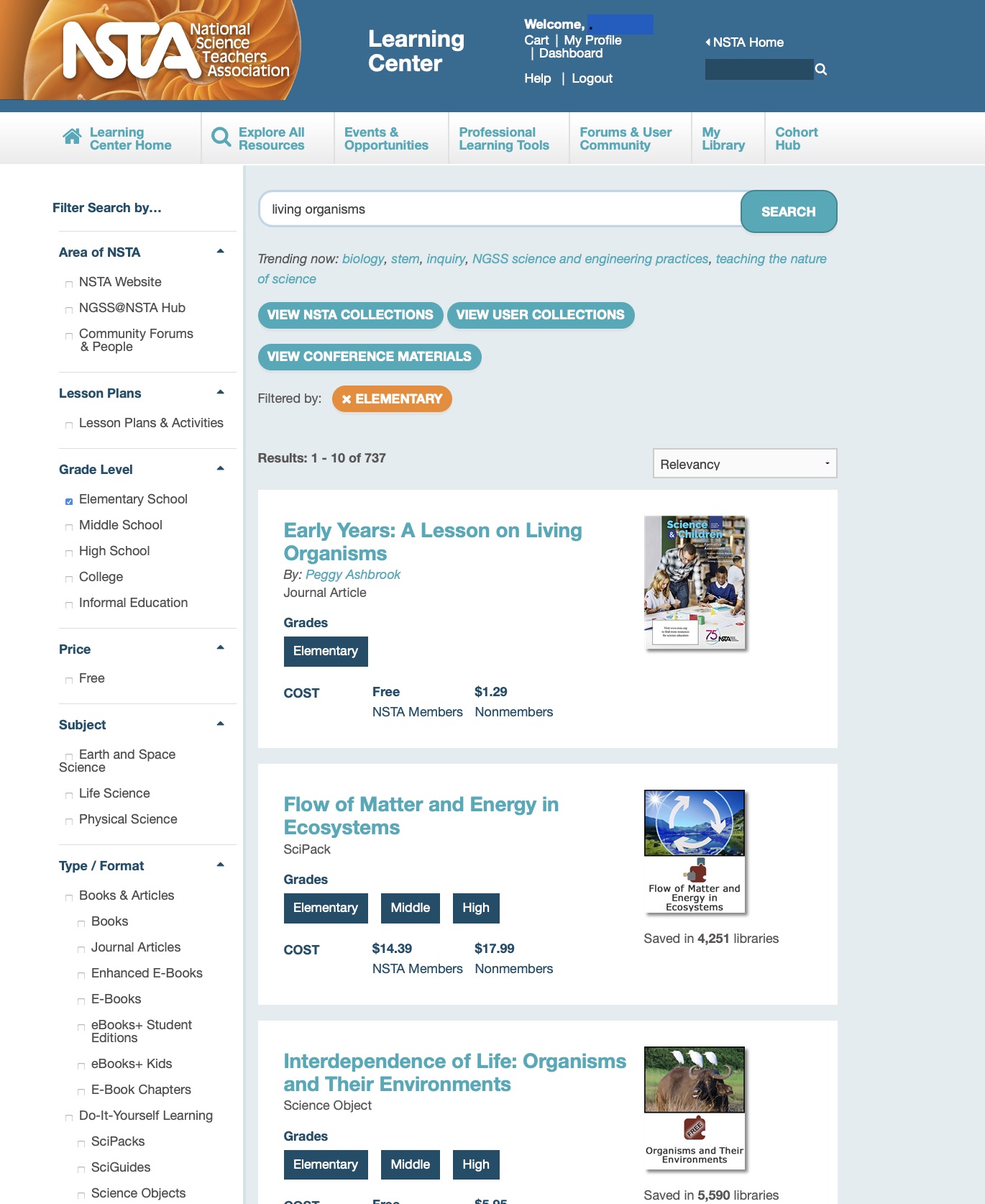Early Childhood Resources Review
Teaching STEM in the Preschool Classroom
Exploring Big Ideas With 3- to 5-Year-Olds
Science and Children—October 2019 (Volume 57, Issue 3)
By Alissa A. Lange, Kimberly Brenneman, and Hagit Mano.
Early Years
Engineering Habits of Mind
Science and Children—October 2019 (Volume 57, Issue 3)
By Peggy Ashbrook and Anne Lowry
Never Too Young to be a Citizen Scientist!
Science and Children—October 2019 (Volume 57, Issue 3)
By Mary Hatton, Sara Grimbilas, Caroline Kane, and Tara Kenyon
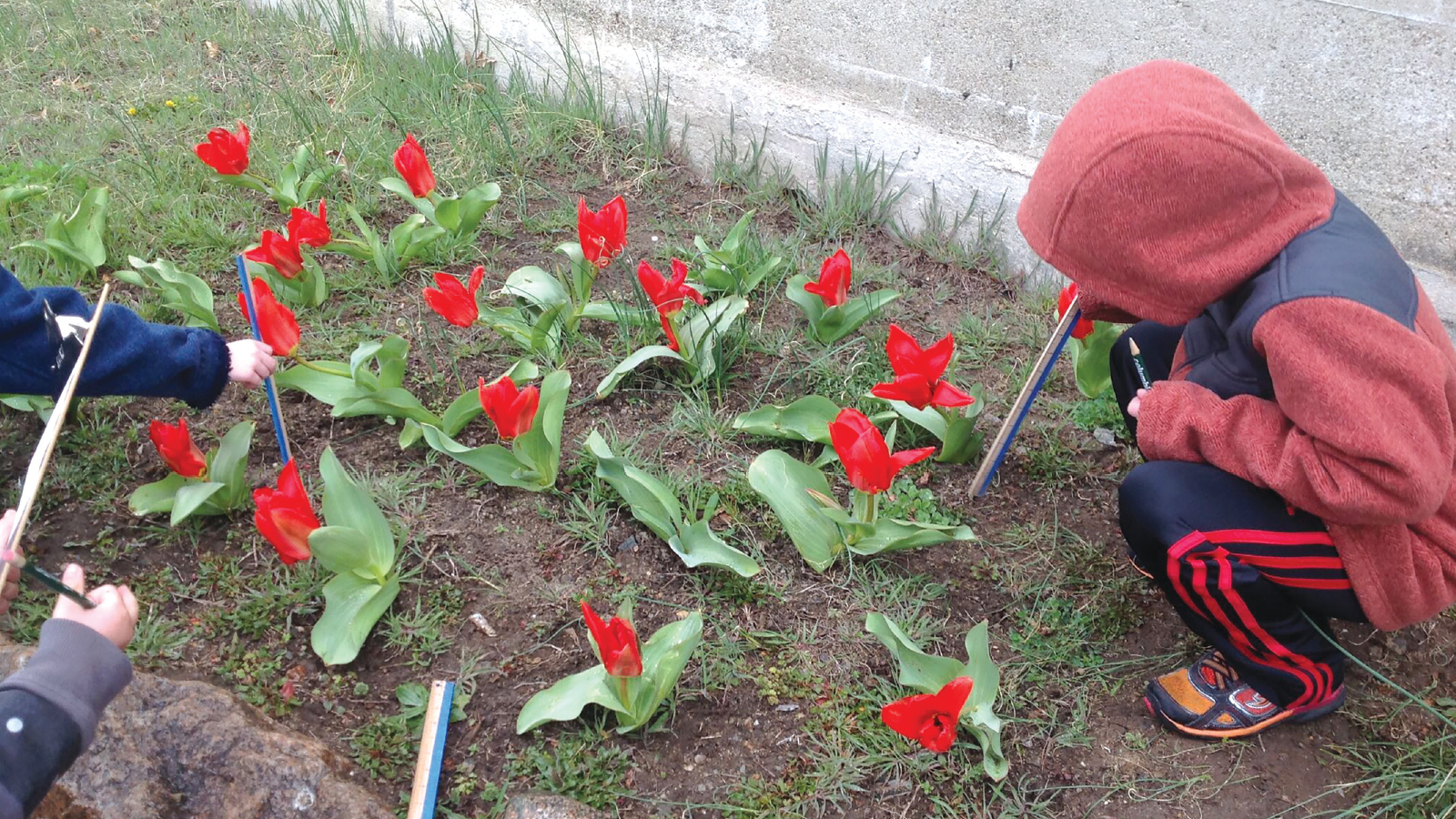
Kindergarteners learn about plants and seasons through a yearlong project.
Kindergarteners learn about plants and seasons through a yearlong project.
Kindergarteners learn about plants and seasons through a yearlong project.
A Home for Three Little Pigs
Science and Children—October 2019 (Volume 57, Issue 3)
By Barbara A. Bradley, Kelli Thomas, and A. Allen Bradley Jr.

Preschool students learn about engineering through designing and testing homes.
Preschool students learn about engineering through designing and testing homes.
Preschool students learn about engineering through designing and testing homes.
Winter Fun Without Wet Mittens
Second-grade students explore materials and problem-solving.
Sort and Classify
By Gabe Kraljevic
Posted on 2019-09-28
 I am a preservice teacher planning some lessons on how to group plants and animals according to observable features. I am struggling to think of different activities.
I am a preservice teacher planning some lessons on how to group plants and animals according to observable features. I am struggling to think of different activities.
— V ., Maryland
Classifying living things has been a part of human endeavor since the dawn of time. Our classifications have undergone many changes as we discover more about life and technology allows us to gather more facts about organisms. The nature of science allows us to adjust our beliefs in the face of new evidence. You can mirror this in grouping lessons.
I found classifying shoes to be a useful and fun introductory activity! (Search NSTA’s Learning Center and online for details.) This activity starts with each student putting a right shoe on a table or counter. (Warn them the day before!) In small groups, they go through the pile and determine what characteristics they will use to sort them for their online store. Tell them to start with large, broad classifications and create sub classes as they feel necessary to guide customers to specific shoes. The groups should present a “family tree” of their final shoe categorization. The differences between groups can lead to a great discussion on how classification in science is debated and changed with new evidence and scientific arguments. Have the class agree on a classification system and test it out.
You can now move to biological classification by doing this same activity with photos or, better yet, live observations of plants, animals, fungi, and slides of bacteria. Compare what your students created with the currently accepted classification system used by scientists.
Hope this helps!
Image by Pete Linforth from Pixabay
 I am a preservice teacher planning some lessons on how to group plants and animals according to observable features. I am struggling to think of different activities.
I am a preservice teacher planning some lessons on how to group plants and animals according to observable features. I am struggling to think of different activities.
— V ., Maryland
Safety Blog
Safer Storage
By Kenneth Roy
Posted on 2019-09-27
According to the NSTA Position Statement titled “The Integral Role of Laboratory Investigations in Science Instruction,” there must be adequate storage space for all materials. From a safety and environmental regulation standpoint, proper storage is a critical issue. Teachers and their supervisors must secure appropriate storage spaces in science labs, especially during renovations or new construction projects.
Science education requires equipment, labware, hazardous chemicals, and project storage. To meet this need, dedicated storage space with specific types of casework is required, including open shelving or cabinets in labs or dedicated storage spaces or rooms. Legal safety standards such as OSHA’s Housekeeping Standard and safe walkways come into play. The safer storage of hazardous chemicals is also governed by many local, state and federal regulations, like NFPA and EPA codes.
Adequate space
Educational specification for construction of science labs and storerooms varies from state to state. However, in general, a preparation room and storage space should be about 10 square feet per student and contain specialized, secure cabinets for different kinds of chemicals, according to the NSTA Guide to Planning School Science Facilities. For a more hands-on course or program, additional space for storage would be required to meet the needs of student work.
General storage
Individual student storage and teacher and general class storage is necessary in science labs. Examples of storage spaces include wall cabinets, drawer units, tall storage units, glass front wall cabinets, microscope cases, and large open/closed areas in all shapes and sizes, depending on the need. Appropriate lighting to reduce the chance of accidents or errors is also critical for a safer operation.
Another critical element to laboratory storage is security. All storage areas must have lock controls to guard against theft or damage. There are legal ramifications under duty of care should a student take a piece of lab equipment/supplies out of the lab and it results is an injury. As long as there is a reasonable deterrent, however, the licensed or certified educator is legally on solid ground in courtroom.
In addition, here are several considerations for storage cabinets:
• Choose solid hardwood construction instead of particle board.
• Cabinets should be securely anchored with known weight limits.
• An inside usable depth of at least 15 inches (38 cm).
• Lock cylinders should be keyed alike for convenience with access for only authorized employees.
• Self-closing drawers/doors will also promote safety.
• All cabinets and shelving are required to be properly secured to walls or other suitable structural supports to prevent movement during a seismic event or similar type of force causing motion.
• Step stools or stepladders should be available to reach high storage places safely.
• NFPA-13 requires that sprinkler heads have a clear distance of 18 inches (0.46 m) from the ceiling to the top of cabinets and/or shelves.
• The bottom of wall cabinets should be 18 to 24 inches or (0.46 to 0.61 m) above the workstation counter tops.
• Wall cabinet doors should have glass panels in order to enhance safety by allowing the contents to be visible. Wired or polycarbonate glazing should be used for cabinets with windows or display cases.
Storage and operation of technology equipment, such as laptop computers, in drawers is also a good idea. Some technology equipment tends to be heat sensitive and therefore requires sufficient ventilation or air movement. Forced air resulting from small fans or screens in the drawer may be helpful in preventing this problem.
Storage for Hazardous Chemicals
Hazardous material storage depends on the hazard (e.g. flammables, combustible materials, corrosives), the quantity and type of operations that are used, and whether the material has gas cylinders, toxic components and highly reactive substances.
Chemicals have different storage conditions, including heat and light sensitivity. Teachers need to be aware of the chemical nature of each chemical used and accommodate for that need based on information provided the chemical Safety Data Sheets and labeling information. Be aware that fume hoods are not for storing any kind of material. This is a significant OSHA violation.
Store the minimum levels of inventory consistent with the lesson plans and dispense limited amounts as needed, being attentive to compatibilities.
OSHA’s Hazard Communication Standard (29 CFR 1910.1200) specifies chemical information on all commercial containers, such as the name of chemical, hazard warnings and name/address of the manufacturer or importer. However, it may be more useful to have a decision date on a container than its expiration date. When the decision date has been reached, the chemicals/products are removed from the shelf and the controller either overrides the decision date and sends the product back with a new decision date or the product is properly disposed of.
The following guidelines should be considered for chemical storage rooms based on legal safety standards and better professional safety practices.
• Appropriate ventilation as required by NFPA-45 is to be provided with continuous air flow exchanges;
• Store only the smallest amounts of products that can be consumed in a school year, but do not exceed the amounts permitted to be stored by OSHA 29 CFR 1910.106 and NFPA 45, as well as maximums set by any other state/local building and fire codes; amounts of flammables as mandated by OSHA 29CFR 1910.106 and NFPA 45.
• Use caution in dealing with peroxides in peroxide-forming chemicals. They are accelerated in the presence of UV light and higher temperatures. Examples of peroxide forming chemicals can be found here.
• Always isolate dissimilar reactive materials (e.g., strong acid-base groups and strong reducing agents and oxidizers).
• Shelf units must be firm, stable, and secured to the walls to prevent sliding, collapsing or falling over.
• Lips or shelf-edge restraints should be placed on every shelf.
• Trays are needed under large volumes of bottles containing liquids to prevent spread of leaks.
• Floors are required to have curbs, scuppers, special drains, or other suitable means to contain spills and prevent the flow of liquids into adjacent building spaces. If a drainage system is used, it should have sufficient capacity to carry the expected discharge of water from fire protection systems and/or hose streams, except if the containers stored do not exceed 10 gal. (38 L), then the storage area need not meet the requirements stated above.
• Nothing should be stored on the floor.
• Water sprinklers.
• Doors with self or auto close hardware.
• Doors to chemical storage areas must be secured with lockable hardware and the access limited to persons trained for the proper handling and operating procedures (science teachers, administrators).
• In spaces dealing with Class 1 liquids/explosive vapors, the light fixtures, switches, electrical equipment, and wiring shall be classified electrically with respect to Article 500 of NFPA 70, National Electrical Code as Class 1, Division 2. The electrical wiring and equipment in storage rooms for Class 11 and Class 111 liquids are permitted to be suitable for general purpose use by NFPA 70, National Electrical Code.
• One or more fire extinguisher (A,B, or C type; D type for combustible metals).
• Appropriate signage advising the need for splash goggles.
• Electrical receptacles located on workstations should be installed 6 inches above the work surface;
• Wall assemblies are required to be constructed to prescribed fire resistance ratings;
• Class I flammable liquids can not be stored at basement level;
• Containers should not be stacked on top of each other;
• Larger storage rooms (greater than 500 sq. ft.) should have at least two remount exits;
• Fans that could produce a spark, both the rotating element and the casing shall be constructed of nonferrous material or of other suitable spark-resistant materials;
Depending on the hazardous materials inventory, an additional type of storage may be necessary, such as flammable liquid cabinets, glass bottles, safety cans, approved plastic containers, and laboratory explosion-proof refrigerators.
Storage cabinets for flammable and combustible materials may need to be mechanically ventilated in accordance with the manufactures listed recommendations and as required by any other local requirements. These cabinets usually have vent ports that can be connected to ducts. The vapors can then be exhausted to outside air. These cabinets can be placed in almost any location as long as proper ventilation is available. Safety cans and other approved containers can be stored in these cabinets. Again, proper signage is required (e.g., Caution: Flammable Liquids).
Some chemicals decompose quickly if not kept refrigerated. Even in refrigeration, chemicals eventually form products that can be flammable and explosive. Refrigerators, freezers, and other cooling equipment used to store or cool flammable liquids shall be designed or modified for such use. These modifications shall include that electrical equipment located within the outer shell or within the storage compartment, in or on the door, door frame shall meet the requirements for Class 1, Division 1 locations, as described in Article 501 of NFPA 70, National Electrical Code or NFPA-45.
Consider the following guidelines for storing chemicals in refrigerators:
• Use only refrigerators designed for chemical storage.
• Never store food and chemicals in the same refrigerator.
• Only store quantities needed.
• Remove chemicals and dispose of properly at drop dead dates.
• Use proper signage on the refrigerator noting storage items (e.g., “For Edible Food And Drink Only” and “For Hazardous Chemical Storage Only”).
• Use good housekeeping techniques when storing things in refrigerator to keep the contents neat and orderly (e.g., do not overload shelves).
• Any unattended electrical heating equipment shall be equipped with a manual reset over-temperature shutoff switch, in addition to normal temperature controls.
Submit questions regarding safety to Ken Roy at safersci@gmail.com or leave him a comment below. Follow Ken Roy on Twitter: @drroysafersci.
NSTA resources and safety issue papers
Join NSTA
Follow NSTA
According to the NSTA Position Statement titled “The Integral Role of Laboratory Investigations in Science Instruction,” there must be adequate storage space for all materials. From a safety and environmental regulation standpoint, proper storage is a critical issue. Teachers and their supervisors must secure appropriate storage spaces in science labs, especially during renovations or new construction projects.
An image gallery of ideas for learning centers
By Peggy Ashbrook
Posted on 2019-09-25

Setting up science learning centers for young children in early childhood programs sometimes means just grabbing what you have at hand because your teaching partners have been out sick all week, and the materials you ordered haven’t arrived yet, and nap time is not yet settled enough for you to plan while the children sleep or the playground is too wet so the children are with you during your planning period.
If we create a photo gallery of our best (and “to be improved”) centers, we’ll have a resource that we can refer to when our creative energy is low or when our children become interested in exploring a material such as water, or are no longer inspired by the current classroom set-up.
Here are photos from classrooms I have visited, and thank you to all who have welcomed me into their space! These materials and centers that may not be excellent examples of what you’d like to do in your program but they give an idea of what some programs are setting up for children. I hope you will begin reflecting on what makes a center an engaging place of learning that gives children something to do and think about, building on their understandings.
I don’t hold these ideas up as ideal or right for every program. Most of them can be improved and certainly none of them should stay the same all year! The trick to creating your own set is to add images from your work to your gallery–in an electronic or paper form–every day so you have a set of references to help you plan interesting learning centers, and can review them with colleagues to reflect on how children will use the materials and what their experiences will teach them.

Setting up science learning centers for young children in early childhood programs sometimes means just grabbing what you have at hand because your teaching partners have been out sick all week, and the materials you ordered haven’t arrived yet, and nap time is not yet settled enou
Connecting with the education community online to find resources
By Peggy Ashbrook
Posted on 2019-09-24
To support my science teaching practice I look for information about teaching young children, and about the science content I think is important for the young children in my program. I have a lot of questions about both these areas:
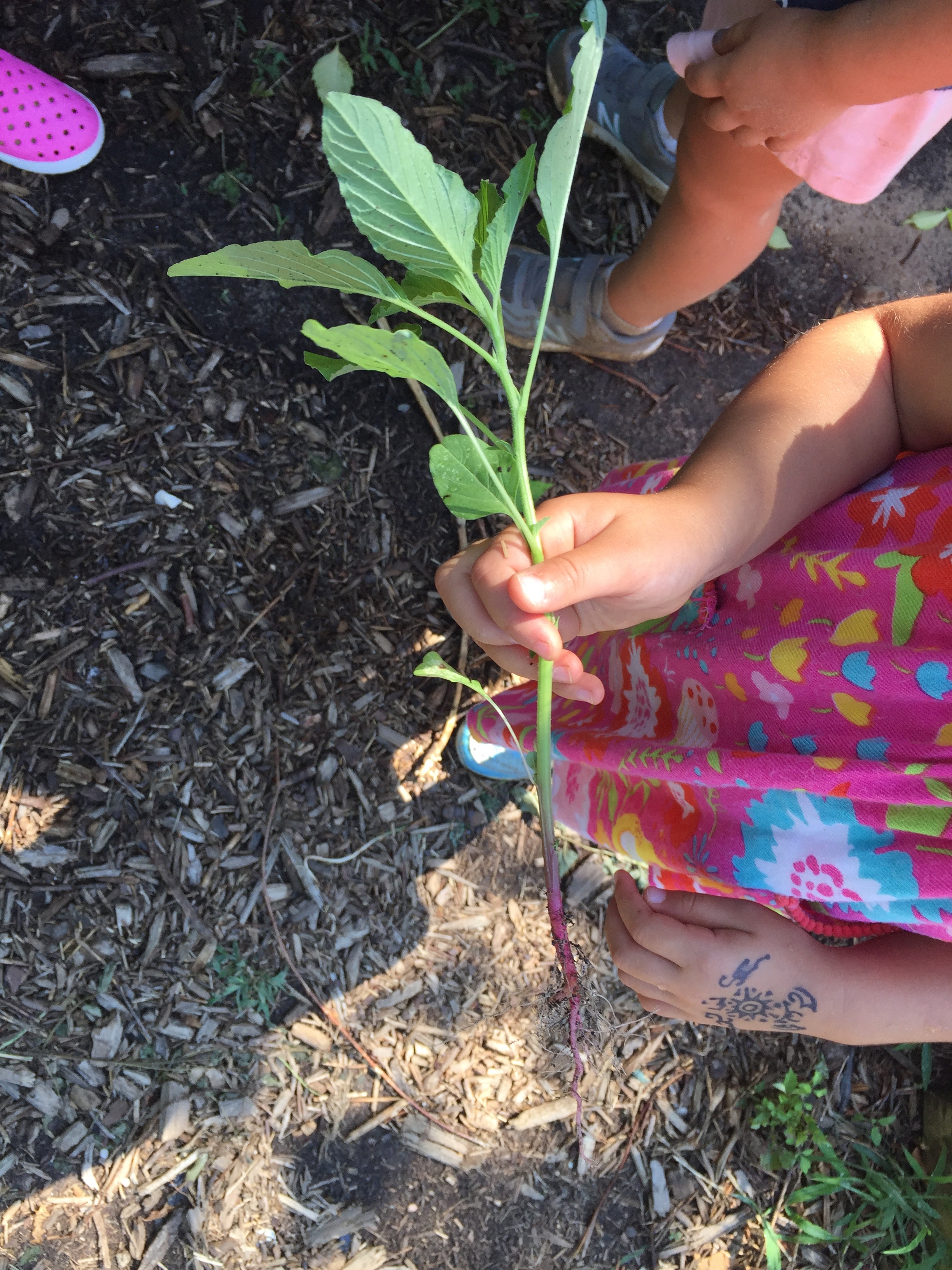
- What resources are up-to-date on the science of how children learn?
- What is the most important science content to teach at the age/grade level I work in?
- Which sources of science content information should I use to make sure I have accurate information?
- Where can a teacher who is just beginning to teach science learn science concepts?
- Are there experiences and investigations developed—and tried with children to see if they are effective—that I can use (with attribution)?
And how do I get answers to these questions!?
The National Science Teaching Association (NSTA) is one of several organizations with many good resources—we just have to dig a little to find them. A productive way to access them is through the NSTA Learning Center as long as you know in general what you are looking for and you do a little research into the NSTA resources before asking for others to provide you with the appropriate resources.
When posting in online forums of any kind, it is helpful to start with refining your request for help and by doing some research to show your professionalism before asking for assistance.
Refining your request:
Do show that you have a specific area of interest. Include some background in your question, such as the age/grade level you will be working with, what area of science the experience/activity/lesson/inquiry should involve, and what other factors need to be considered (size of the group, any specific needs children have, does literacy or other domain need to be well integrated, available materials, and any concerns you have about classroom management).
A request for help such as, “I’m looking for a simple science lesson that will engage children in elementary grades and be fun,” may not generate much interest on the NSTA Learning Center forums. It is likely to get the vague response, “Look on Pinterest.” Let’s add the details that make it easy for other educators to respond with information that will be helpful:
“I’m a preservice teacher who is working with a kindergarten class and I want to teach about living organisms. I see in the NGSS Appendix E – Progressions Within the Next Generation Science Standards that “All organisms have external parts that they use to perform daily functions” is the appropriate core idea for this age group. I want help creating an engaging lesson, or series of lessons that are simple to implement yet still meaningful and fun for the lower grades. I will only have 30 minutes each week. Do you have a lesson or can recommend another resource?”
Do some prior research:
For a lesson plan that has already been tried and found to be effective—and has up-to-date science content and student expectations—search the NSTA Learning Center for articles from Science and Children.
Select “Explore All Resources,” type in the general content of interest (such as “living organisms” or “weather”), and select “Elementary” grade level. Thousands of resources will be listed but do not despair! You can reduce the number of suggested resources by further filtering. Type in the general content of interest again in the new Search window. Try additional filters of “Lesson Plans,” “Journal Articles,” or “User collections,” one at a time to see which filter brings up the most easily accessed resources. Yes, you will probably have hundreds of resources to search though, and that is both the value of the NSTA resources and part of becoming more knowledgeable.
Now that you have a few articles or books that you think will be helpful, add that information to your post on the NSTA Learning Center forum to show your professionalism:
“I’m a preservice teacher who is working with a kindergarten class and I want to teach about living organisms. I see in the NGSS Appendix E – Progressions Within the Next Generation Science Standards that “All organisms have external parts that they use to perform daily functions” is the appropriate core idea for this age group. I want help creating an engaging lesson, or series of lessons that are simple to implement yet still meaningful and fun for the lower grades. I will only have 30 minutes each week. Do you have a lesson or can recommend a resource? I found “Early Years: A Lesson on Living Organisms from the 7/1/2019 issue of Science and Children.” Can you recommend a lesson or a resource like this?”
Once you get a resource, use the sets of questions from the NAEYC Early Childhood Science Interest Forum (ECSIF) (Peterson et al 2019) to tell if the suggested experiences/lesson plans/inquiry activities, or others you found on the web, are of high quality. These questions will help you determine if the activities engage children in the practices of science and engineering (NRC 2013), don’t underestimate children’s abilities to learn core science ideas, and provide the necessary time children will need to deeply engage in meaningful scientific questions and engineering problems (which is what makes it fun!). And to avoid craft-only, teacher demonstrations, or prescribed steps for children to follow exactly, which don’t honor or support children’s growing science understandings.
How do you find the information you need? The public library is one of my favorite places to learn more. Share your methods for answering these questions by commenting so others can benefit from your experience!
- What resources are up-to-date on the science of how children learn?
- What is the most important science content to teach at the age/grade level I work in?
- Which sources of science content information should I use to make sure I have accurate information?
- Where can a teacher who is just beginning to teach science learn science concepts?
- Are there experiences and investigations developed—and tried with children to see if they are effective—that I can use (with attribution)?
Resources
NRC. 2013. Next Generation Science Standards: For States, By States. Washington, DC: The National Academies Press. Peterson, Sherri, and Cindy Hoisington, Peggy Ashbrook, Beth Dykstra Van Meeteren, Rosemary Geiken, Sonia Akiko Yoshizawa, Sandy Chilton and Joseph B. Robinson. 2019. To Pin or Not to Pin? Choosing, Using, and Sharing High-Quality STEM Resources. Young Children. 74(3): 79-85
To support my science teaching practice I look for information about teaching young children, and about the science content I think is important for the young children in my program. I have a lot of questions about both these areas:
Legislative Update
Appropriations Update
By Jodi Peterson
Posted on 2019-09-23
Appropriations Update
A lot is going on in both chambers of government; let’s start first in the U.S. House of Representatives: lawmakers last week passed a stopgap spending measure (continuing resolution) that provides continuing appropriations at FY19 levels to federal agencies through November 21, 2019. (A government shutdown would occur on October 1, 2019, the start of FY2020, since none of the 12 regular appropriations bills that fund the federal government for FY2020 have been enacted).
The bill, H.R. 4378 (116), is now before the Senate, which is expected to pass it sometime before the Sept. 30 funding deadline. This gives leaders in Congress and the White House until before Thanksgiving to come up with funding compromises on key issues, including funding for the border wall.
The extension in funding for FY20 was still necessary despite the bipartisan budget deal, H.R. 3877 (116) that passed in early August. However, debates in the Senate over a host of issues this month delayed the normal process to pass the FY20 spending bills and necessitated the need for a continuing resolution.
As you will recall from a previous Legislative Update the first House-passed minibus, H.R. 2740 (116), which bundles the text of four of the 12 appropriations bills for FY2020, (Defense, Labor-HHS-Education, Energy-Water and State Foreign-Operations), passed the house on June 19.
In the Senate: Senate appropriators unveiled their education spending bill for FY2020 last week. The Senate bill largely ignores the cuts the Trump Administration had proposed to education, but it funds many programs at levels lower than the House bill. The Senate bill would provide $71.4 billion in discretionary spending on education, less than the House’s proposed budget of $75.9 billion for the Education Department
In the Senate education bill lawmakers are proposing the Title IVA Student Support and Academic Enrichment Grants, which support science and STEM programs, receive a $50 million increase over last year. Title IIA, which funds teacher professional development, would be level funded.
Here is the summary of the proposed education funding in the Senate bill:
- $15.9 billion for Title I Grants to Local Educational Agencies, the same as FY2019.
- $2.1 billion for Title II Supporting Effective Instruction State grants, the same as FY2019
- $1.2 billion for Title IV Student Support and Academic Enrichment Grants, a $50 million increase, which supports a wide range of activities including STEM education and school safety activities.
- $12.4 billion for IDEA State Grants to support special education for students with disabilities, the same as FY2019.
- $1.5 billion for Impact Aid, an increase of $25 million.
- $1.2 billion, level with FY2019, for 21st Century Community Learning Centers to support academic enrichment activities for students before school, after school, and during the summer.
- $460 million for the Charter Schools Program, an increase of $20 million. This includes $7.5 million specifically to expand charter schools in rural areas.
- $105 million for Safe Schools National Activities, an increase of $10 million, which supports evidence-based activities to improve school safety, prevent violence, and improve school climates.
- $60 million in dedicated STEM education funding within the Education Innovation and Research program, the same as FY2019.
Since Congressional leaders are also negotiating the continuing resolution passed in the House to continue funding for the government beyond September 30, it is still unclear when and if further action on this specific education spending legislation will occur.
House Appropriators Hear from NASA and NSF Administrators on STEM Education
Michael Kincaid, Associate Administrator for STEM Engagement, National Aeronautics and Space Administration and Karen Marrongelle, Assistant Director of the National Science Foundation for Education and Human Resources were the two witnesses last week before the House appropriations subcommittee hearing on STEM education in their respective agencies. Both administrators provided a great overview of the STEM education initiatives at NSF and NASA. The subcommittee’s spending bill for fiscal year 2020 proposes to boost the NSF education directorate by 4% to $950 million and the NASA office by 12% to $123 million.
From the NSF testimony: NSF programs collectively educate, train, and support discoverers; engage citizen scientists; and foster a well-informed, STEM-literate citizenry to ensure that the country has an exceptionally skilled and diverse STEM workforce that meets today’s needs and is prepared to meet the needs of the future.
From the NASA testimony: To execute our STEM engagement efforts, we leverage our community of talented and dedicated education professionals, and capitalize on our technical workforce, tremendously committed to inspiring and engaging youth and students in STEM. NASA has a portfolio of activities and opportunities dedicated to attracting, engaging and educating students and to support educators and educational institutions across the nation. These range from internships and fellowships, research and development (R&D) opportunities, challenges and competitions, pre-college and 2 college STEM experiences, virtual learning, educator and faculty support, as well as institutional support. In FY2018, over 820,000 students participated in NASA STEM Engagement activities, from Elementary students to Post-Doctoral scholars, and over 180,000 educators participated in NASA professional development activities.
National Science Board Releases Report on Skilled Technical Workforce
The National Science Board has released a report on the skilled technical workforce (STW) that calls attention to the jobs that involve substantial STEM skills but do not require four-year degrees. About 17 million people currently fall within the STW category, according to the report, and the United States is facing a potential shortfall of 3 million workers in the area by 2022. The report calls for dispelling negative perceptions of such roles and illuminating the pathways into this “underappreciated” segment of the U.S. workforce. Read the report here.
U.S. Supreme Court to Hear Arguments in School Choice Case in 2020
Arguments for a school choice case taken up by the Supreme Court earlier this summer won’t happen until 2020.
Espinoza v. Montana Department of Revenue, centers on whether a tax credit scholarship program in Montana violates a state constitutional provision prohibiting the legislature from appropriating public funds to aid religious schools.
The Montana program provides a tax credit to individuals and businesses who donate to private scholarship organizations, which can then use the donations to give scholarships to needy families who want to send their children to private schools.
The Montana Supreme Court struck down the program in December, ruling that the tax credit was allowing the Legislature to “indirectly pay public funds” to religious schools,
School choice supporters see the case as a potential vehicle to overturn so-called Blaine amendments, state constitutional provisions that prevent public funding from going to religious education.
And last but not least, congratulations to NSTA member Tammy Will, who was invited by Rep. Frank Lucas, ranking member of the House Committee on Science, Space and Technology, to participate in a private, members only panel on Rural STEM education earlier this summer. Check out the video she made for the Science Committee after her meeting with the lawmakers.
Stay tuned, and watch for more updates in future issues of NSTA Express.
Jodi Peterson is the Assistant Executive Director of Communication, Legislative & Public Affairs for the National Science Teachers Association (NSTA) and Chair of the STEM Education Coalition. Reach her via e-mail at jpeterson@nsta.org or via Twitter at @stemedadvocate.
The mission of NSTA is to promote excellence and innovation in science teaching and learning for all.
Appropriations Update
A lot is going on in both chambers of government; let’s start first in the U.S. House of Representatives: lawmakers last week passed a stopgap spending measure (continuing resolution) that provides continuing appropriations at FY19 levels to federal agencies through November 21, 2019. (A government shutdown would occur on October 1, 2019, the start of FY2020, since none of the 12 regular appropriations bills that fund the federal government for FY2020 have been enacted).




